#Ancient wheat varieties
Explore tagged Tumblr posts
Text
Best Wheat for Diabetes
This article is originally published on Freedom from Diabetes website, available here. When considering the best wheat options for individuals with diabetes, it’s important to focus on whole grains and those with a lower glycemic index. Lets understand 100 grams of wheat contain,Carbohydrates: 72 grams, Sugar 0.4 grams Protein: 13.2 grams,Water: 10 – 11%,Calories: ~ 340, Fiber: 12- 15% (bran).

Advantages and Disadvantages of Wheat:
Where diabetics are concerned, wheat in moderation makes a good addition to the diet, for the following reasons. 1.Heart-healthy- Whole wheat’s high fiber content helps reduce cholesterol, it help to down the risk of heart related problem.
2.Good for digestion- Fiber is present in the wheat, which is help in digestion.
Improves BSL- The fiber in wheat helps slow down the absorption of glucose, keeping your blood sugar levels from spiking.
4.Energy booster - Wheat's low GI and carbohydrate content ensure a steady and controlled release of calories.
What are the Disadvantages of wheat?
Digestion problem- Wheat's high fiber content is good for digestion, but some people have celiac disease, a chronic condition where gluten triggers digestive and immune problems.
Raises cholesterol level- Wheat contains a lot of carbohydrates, which, if eaten in excess, causes blood sugar to rise, and that can be bad for your LDL levels.
Wheat varieties for diabetics:
All wheat varieties are not equal. Which is good news for diabetics, because some varieties are proven to help lower blood sugar and provide other health benefits too. These are recommended wheat varieties for diabetes
Khapli (emmer wheat)
Spelt wheat
Durum wheat
Bansi wheat
Red wheat
At Freedom From Diabetes, we strongly recommend shifting from regular wheat to these varieties, for the following reasons. They have a lower GI, which makes them suitable for the diabetic diet. They are also rich in fiber, vitamins, and minerals that offer a variety of health benefits from regulating blood sugar levels to improving cardiovascular health. If you can’t think of going without chapatti, we highly recommend shifting from chapattis made from regular wheat flour to flour made from khapli (emmer), Brum, jungli, Bansi, spelt, or indeed any of the ancient wheat varieties. To read more, click here.
Also please connect with me on my Website, Facebook page, and YouTube if you want to stay in touch or give me any feedback!
#Wheat for diabetes#is wheat good for diabetes#is wheat chapati good for diabetes#wheat flour for diabetes#best wheat variety in india#best wheat variety#wheat and diabetes#wheat flour and diabetes#wheat and diabetes connection#Regular wheat flour#Ancient wheat varieties#Khapli flour#Emmer wheat#Brum wheat#Wheat substitutes
0 notes
Text
Kodo Millet Vermicelli (Varagu), is a good alternative to regular vermicelli.
Kodo millet vermicelli is a nutritious and gluten-free alternative to traditional wheat-based vermicelli. Made from the ancient grain, kodo millet, this vermicelli is a healthy and tasty option for those looking for a low-carb and high-fiber option. It can be used in a variety of dishes such as stir-fries, salads, soups.
#Kodo Millet vermicelli is a nutritious and gluten-free alternative to traditional wheat-based vermicelli. Made from the ancient grain#Kodo Millet#this vermicelli is a healthy and tasty option for those looking for a low-carb and high-fiber option. It can be used in a variety of dishes#salads#soups
0 notes
Text

[ID: Two plates of cookies, one oval and topped with powdered sugar, and the others shaped in rings; one cookie is broken in half to show a date filling; two glasses of coffee on a silver tray are in the background. End ID]
معمول فلسطيني / Ma’moul falastini (Palestinian semolina cookies)
Ma’moul (also transliterated “ma’amoul,” “maamoul” and “mamoul”) are sweet pastries made with semolina flour and stuffed with a date, walnut, or pistachio filling. The cookies are made tender and crumbly with the addition of fat in the form of olive oil, butter, or clarified butter (سمن, “samn”); delicate aromatics are added by some combination of fennel, aniseed, mahlab (محلب: ground cherry pits), mastic gum (مستكه, “mistīka”), and cinnamon.
“مَعْمُول” means “made,” “done,” “worked by hand,” or “excellently made” (it is the passive participle of the verb “عَمِلَ” “‘amila,” "to do, make, perform"). Presumably this is because each cookie is individually filled, sealed, and shaped by hand. Though patterned molds known as طوابع (“ṭawābi’,” “stamps”; singular طابع, “ṭābi’”) are sometimes used, the decorations on the surface of the cookies may also be applied by hand with the aid of a pair of small, specialized tongs (ملقط, “milqaṭ”).
Because of their laborious nature, ma’moul are usually made for feast days: they are served and shared for Eid, Easter, and Purim, a welcome reward after the Ramadan or Lenten fasts. For this reason, ma’moul are sometimes called “كَعْك العيد” (“ka’k al-’īd,” “holiday cakes”). Plates of the cookies, whether homemade or store-bought, are passed out and traded between neighbors in a practice that is part community-maintenance, part continuity of tradition, and part friendly competition. This indispensable symbol of celebration will be prepared by the women of a family even if a holiday falls around the time of a death, disaster, or war: Palestinian food writer Laila El-Haddad explains that "For years, we endured our situation by immersing ourselves in cooking, in our routines and the things we could control."
Other names for these cakes exist as well. Date ma’moul–the most common variety in Palestine–may be called كَعْك بعَجْوَة (“ka'k b'ajwa”), “cakes with date paste.” And one particular Palestinian variety of ma’moul, studded with sesame and nigella seeds and formed into a ring, are known as كَعْك أَسَاوِر (“ka'k 'asāwir”), “bracelet cakes.” The thinner dough leads to a cookie that is crisp and brown on the outside, but gives way to a soft, chewy, sweet filling.
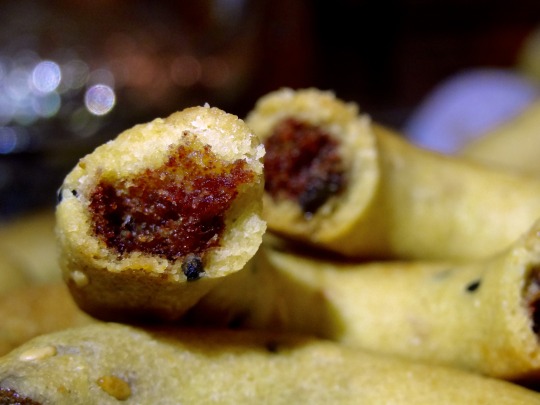
[ID: An extreme close-up on one ka'k al-aswar, broken open to show the date filling; ma'moul and a silver teapot are very out-of-focus in the background. End ID]
History
Various sources claim that ma’moul originated in Egypt, with their ancestor, كحك (kaḥk), appearing in illustrations on Pharaonic-era tombs and temples. The more specific of these claims usually refer to “temples in ancient Thebes and Memphis,” or more particularly to the vizier Rekhmire’s tomb in Thebes, as evidencing the creation of a pastry that is related to modern kahk. One writer attests that this tomb depicts “the servants mix[ing] pure honey with butter on the fire,” then “adding the flour by mixing until obtaining a dough easy to transform into forms” before the shaped cookies were “stuffed with raisins or dried dates and honey.” Another does not mention Rekhmire, but asserts that “18th-dynasty tombs” show “how honey is mixed with butter on fire, after which flour is added, turning the substance into an easily-molded dough. These pieces are then put on slate sheets and put in the oven; others are fried in oil and butter.”
Most of these details seem to be unfounded. Hilary Wilson, summarizing the state of current research on Rekhmire’s tomb, writes that the depicted pastries were delivered as an offering to the Treasury of the Temple of Amun; that they certainly contained ground tiger nuts; that they presumably contained wheat or durum flour, since ground tiger nuts alone would not produce the moldable dough illustrated; that the liquid added to this mixture to form the dough cannot be determined, since the inscription is damaged; that the cakes produced “are clearly triangular and, when cooked are flat enough to be stacked” (any appearance that they are pyramidal or conical being a quirk of ancient Egyptian drawing); that they were shallow-fried, not cooked in an oven; and that honey and dates are depicted at the far left of the scene, but their relationship to the pastries is unclear. There is no evidence of the honey being included in the dough, or the cookies being stuffed with dates; instead, Wilson speculates that “It appears that the cooks are preparing a syrup or puree of dates and honey. It is tempting to think that the cakes or pastries were served [...] with a generous portion of syrup poured over them.” Whether there is any direct lineage between these flat, fried pastries and the stuffed, molded, and baked kahk must also be a matter of speculation. [1]
Another origin claim points to ancient Mesopotamia. James David Audlin speculates that ma’moul are "possibly" the cousins of hamantaschen, both being descended from the molded "kamānu cakes that bore the image of [YHWH’s] goddess wife Inanna [also known as Ishtar or Astarte]" that were made in modern-day Syria. Other claims for Mesopotamia cite qullupu as the inspiration: these cakes are described in the contemporary record as wheat pastries filled with dates or raisins and baked. (Food historian Nawal Nasrallah writes that these cookies, which were offered to Ishtar for the new year festival in spring, may also be an origin point for modern Iraqi كليچة, "kleicha.")
The word "määmoul" had entered the English language as a type of Syrian farina cake by 1896.
In Palestine
From its earliest instantiations, Zionist settlement in Palestine was focused on building farming infrastructure from which Palestinians could be excluded: settlers, incentivized by foreign capital, aimed at creating a separate economy based around farms, agricultural schools, communal settlements, and research institutions that did not employ Arabs (though Arab labor and goods were never entirely cut out in practice).
Zionist agricultural institutes in Palestine had targeted the date as a desirable crop to be self-sufficient in, and a potentially profitable fruit for export, by the 1930s. Ben-Zion Israeli (בנציון ישראלי), Zionist settler and founder of the Kinneret training farm, spoke at a 1939 meeting of the Organization of Fruit Growers (ארגון מגדלי פירות) in the Nahalel (נהלל) agricultural settlement to discuss the future of date palms in the “land of Israel.” He discussed the different climate requirements of Egyptian, Iraqi, and Tunisian cultivars—and which among them seemed “destined” (נועדים) for the Jordan Valley and coastal plains—and laid out his plan to collect saplings from surrounding countries for planting despite their prohibitions against such exports.
In the typical mode of Zionist agriculture discourse, this speech dealt in concepts of cultivation as a means of coming into a predestined ownership over the land; eating food suited for the climate as a means of belonging in the land; and a return to Biblical history as a triumphant reclamation of the land from its supposed neglect and/or over-cultivation by Palestinian Arabs over the past 2,000 years. Israeli opened:
נסתכל לעברה של הארץ, אשר אנו רוצים להחיותה ולחדשה. היא השתבחה ב"שבעה מינים" ואלה עשוה אינטנסיבית וצפופת אוכלוסין. לא רק חיטה ושעורה, כי אם גם עצים הנותנים יבול גדול בעל ערך מזוני רב. בין העצים -- הזית [...] הגפן, התאנה והתמר. לשלושה מהם, לזית, לתאנה ולתמר חטאה התישבותנו שאין היא נאחזת בהם אחיזה ציםכר של ממש ואינה מפתחת אותם דים.
We will look to the past of the land [of Israel], which we want to revive and renew. It excelled in "seven species," and these flourished and became densely populated. Not only wheat and barley, but also trees that give a large and nutritious crop. Among the trees: the olive, [...] the vine, the fig and the date. For three of them, the olive, the fig and the date, it is the sin of our settlement that it does not hold on to them with a strong grip and does not develop them.
He continued to discuss the benefits of adopting the date—not then part of the diet of Jewish settlers—to “health and economy” (בריאות וכלכלה). Not only should the “land of Israel” become self-sufficient (no longer importing dates from Egypt and Iraq), but dates should be grown for export to Europe.
A beginning had already been made in the importation of about 8,000 date palm saplings over the past two decades, of which ¾ (according to Israeli) had been brought by Kibbutz Kinneret, and the remaining ¼ by the settlement department of the Zionist Commission for Palestine (ועד הצירים), by the Mandate government's agriculture department, and by people from Degania Bet kibbutz ('דגניה ב). The majority of these imports did not survive. More recently, 1000 smuggled saplings had been planted in Rachel’s Park (גן רחל), in a nearby government plot, and in various places in the Jordan Valley. Farms and agricultural institutions would need to collaborate in finding farmers to plant dates more widely in the Beit-Sha’an Valley (בקעת בית שאן), and work to make dates take their proper place in the settlements’ economies.
These initial cuttings and their descendents survive in large plantations across “Israel” and the occupied Palestinian territories. Taher Herzallah and Tarek Khaill write that “Palm groves were planted from the Red Sea in the south along the Dead Sea, and as far as the Sea of Galilee up north, which has given the Israeli date industry its nickname ‘the industry of the three seas’” Since Israel occupied the Palestinian West Bank in 1967, it has also established date plantations in its illegal settlements in that portion of the Jordan Valley.” Today, these settlements produce between 40 and 60% of all Israeli dates.
In 2022, Israel exported 67,042 tons of dates worth $330.1 million USD; these numbers have been on a steady rise from 4,909 tons worth $1.2m. in 1993. Palestinian farmers and their children, disappropriated from their land and desperate for income, are brought in to date plantations to work for long hours in hazardous conditions for low pay. Workers are lifted into the date palms by cranes where they work, with no means of descending, until the crane comes to lower them down again at the end of the day. Injuries from falls, pesticides, heat stroke, and date-sorting machinery are common.
Meanwhile, settlers work to curtail and control Palestinian production of dates. The Palestinian population in the West Bank and Gaza is used as a pool of cheap labor and a captive market to purchase Israeli imports, absorb excesses in Israeli goods, stabilize Israeli wages, and make up for market deficits. Thus Palestinian date farmers may be targeted with repressive measures such as water contamination and diversion, destruction of wells, crop destruction, land theft, military orders forbidding the planting of trees, settler attacks, closing of checkpoints and forbidding of exports, and the denial of necessary equipment or the means to make it, in part to ensure that their goods do not compete with those of Israeli farmers in domestic or foreign markets. Leah Temper writes that these repressive measures are part of a pattern whereby Israel tries to “stop [Palestinian] growth in high value crops such as strawberries, avocados and dates, which are considered to be ‘Israeli Specialties’.”
At other times, Palestinian farmers may be ordered to grow certain crops (such as strawberries and dates), and forbidden to grow anything else, when Israeli officials fear falling short of market demand for a certain good. These crops will be exported by Israeli firms, ensuring that the majority of profits do not accrue to Palestinians, and that Palestinians will not have the ability to negotiate or fulfill export contracts themselves. Nevertheless, Palestinian farmers continue to defy these oppressive conditions and produce dates for local consumption and for export. Zuhair al-Manasreh founded date company Nakheel Palestine in 2011, which continues production despite being surrounded by Israeli settlements.
Boycotts of Israeli dates have arisen in response to the conditions imposed on Palestinian farmers and workers. Herzallah and Khaill cite USDA data on the effectiveness of boycott, pressure, and flyering campaigns initiated by groups including American Muslims for Palestine:
Israel’s exports of dates to the US have dropped significantly since 2015. Whereas 10.7 million kilogrammes (23.6 million pounds) of Israeli dates entered the US market in 2015-2016, only 3.1 million kilogrammes (seven million pounds) entered the US market in 2017-2018. The boycott is working and it is having a detrimental effect on the Israeli date industry.
Date products may not be BDS-compliant even if they are not labeled as a product of Israel. Stores may repackage dates under their own label, and exporters may avoid declaring their dates to be a product of Israel, or even falsely label them as a product of Palestine, to avoid boycotts. Purchase California dates, or dates from a known Palestinian exporter such as Zaytoun or Yaffa (not “Jaffa”) dates.
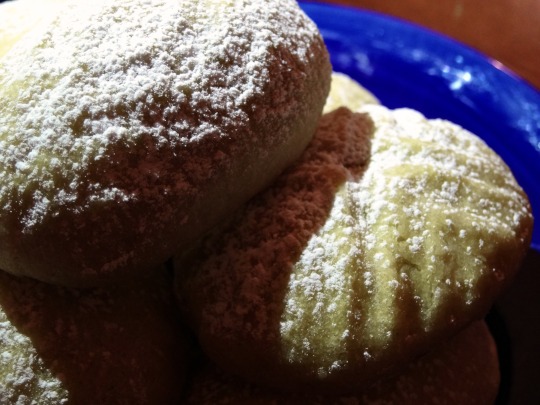
[ID: Close-up of the top of ma'moul, decorated with geometric patterns and covered in powdered sugar, in strong light and shadow. End ID]
Elsewhere
Other efforts to foreground the provenance and political-economic context of dates in a culinary setting have been made by Iraqi Jew Michael Rakowitz, whose store sold ma’moul and date syrup and informed patrons about individual people behind the hazardous transport of date imports from Iraq. Rakowitz says that his project “utilizes food as a point of entry and creates a different platform by which people can enter into conversation.”
[1] Plates from the tomb can be seen in N. de G. Davies, The tomb of Rekh-mi-Rē at Thebes, Vol. II, plates XLVII ff.
Purchase Palestinian dates
Donate to evacuate families from Gaza
Flyer campaign for eSims
Ingredients:
Makes 16 large ma'moul and 32 ka'k al-aswar; or 32 ma'moul; or 64 ka'k al-aswar.
For the dough:
360g (2 1/4 cup) fine semolina flour (سميد ناعم / طحين فرخة)
140g (1 cup + 2 Tbsp) white flour (طحين ابيض)
200g (14 Tbsp) margarine or vegetarian ghee (سمن), or olive oil
2 Tbsp (15g) powdered sugar
1 1/2 Tbsp (10g) dugga ka'k (دقة كعك)
1/2 tsp (2g) instant yeast
About 2/3 cup (190mL) water, divided (use milk if you prefer)
1 tsp toasted sesame seeds (سمسم)
1 tsp toasted nigella seeds (قزحه / حبة البركة)
Using olive oil and water for the fat and liquid in the dough is more of a rural approach to this recipe; ghee and milk (or milk powder) make for a richer cookie.
To make the bracelets easy to shape, I call for the inclusion of 1 part white flour for every 2 parts semolina (by volume). If you are only making molded cookies and like the texture of semolina flour, you can use all semolina flour; or vary the ratio as you like. Semolina flour will require more added liquid than white flour does.
For the filling:
500g pitted Madjoul dates (تمر المجهول), preferably Palestinian; or date paste
2 Tbsp oil or softened margarine
3/4 tsp dugga ka'k (دقة كعك)
3/4 tsp ground cinnamon
5 green cardamom pods, toasted, skins removed and ground; or 1/4 tsp ground cardamom
Small chunk nutmeg, toasted and ground, or 1/4 tsp ground nutmeg
10 whole cloves, toasted and ground, or 1/4 tsp ground cloves
The filling may be spiced any way you wish. Some recipes call for solely dugga ka'k (or fennel and aniseed, its main components); some for a mixture of cinnamon, cardamom, nutmeg, and/or cloves; and some for both. This recipe gives an even balance between the pungency of fennel and aniseed and the sweet spiciness of cinnamon and cloves.
Palestinian date brands include Ziyad, Zaytoun, Hasan, and Jawadir. Palestinian dates can also be purchased from Equal Exchange. You can find them online or at a local halal market. Note that an origin listed as "West Bank" does not indicate that a date company is not Israeli, as it may be based in a settlement. Avoid King Solomon, Jordan River, Mehadrin, MTex, Edom, Carmel Agrexco, Arava, and anything marked “exported by Hadiklaim”. Also avoid supermarket brands, as the origin of the dates may not be clearly marked or may be falsified to avoid boycots.

Instructions:
For the dough:
1. Melt margarine in a microwave or saucepan. Measure flours into a large mixing bowl and pour in margarine; mix thoroughly to combine. Rub flours between your hands for a few minutes to coat the grains in margarine. The texture should resemble that of coarse sad. Refrigerate the mixture overnight, or for up to 3 days.
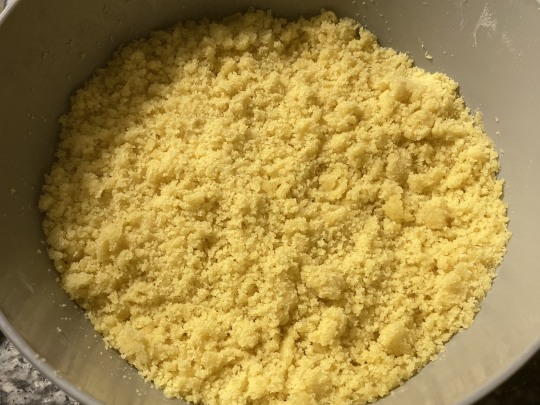
2. Add dry ingredients to dough. If making both molded ma'moul and ka'k al-aswar, split the dough in half and add sesame and nigella seeds to one bowl.
3. Add water to each dough until you get a smooth dough that does not crack apart when formed into a ball and pressed. Press until combined and smooth, but do not over-knead—we don't want a bready texture. Set aside to rest while you make the filling.
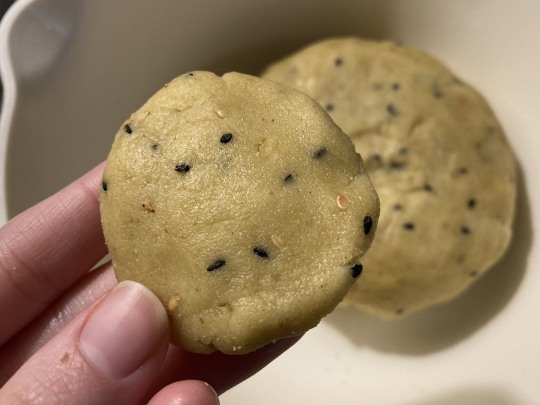
For the filling:
1. Pit dates and check the interiors for mold. Grind all ingredients to a paste in a food processor. You may need to add a teaspoon of water, depending on the consistency of your dates.
To shape the cookies:
Divide the filling in half. One half will be used for the ma'moul, and the other half for the bracelets.
For the ma'moul:
1. With wet hands, pinch off date filling into small chunks about the size of a walnut (13-16g each, depending on the size of your mold)—or roll filling into a long log and divide into 16-20 even pieces with a dough scraper. Roll each piece of filling into a ball between your palms.
2. Divide the dough (the half without seeds) into the same number of balls as you have balls of filling, either using a kitchen scale or rolling into a log and cutting.
3. Form the dough into a cup shape. Place a ball of filling in the center, and fold the edges over to seal. Press the dough into a floured ma'moul mold to shape, then firmly tap the tip of the mold on your work surface to release; or, use a pair of spiked tweezers or a fork to add decorative designs by hand.

4. Repeat until all the the dough and filling has been used, covering the dough you're not working with to keep it from drying out. Place each cookie on a prepared baking sheet.
For the ka'k al-aswar:
1. With wet hands, divide the date filling into about 32 pieces (of about 8g each); they should each roll into a small log about the size of your pinkie finger.
2. Divide the dough (the half with the seeds) into as many pieces as you have date logs.
3. Take a ball of dough and flatten it into a thin rectangle a tiny bit longer than your date log, and about 3 times as wide. Place the date log in the center, then pull the top and bottom edges over the log and press to seal. Seal the ends.

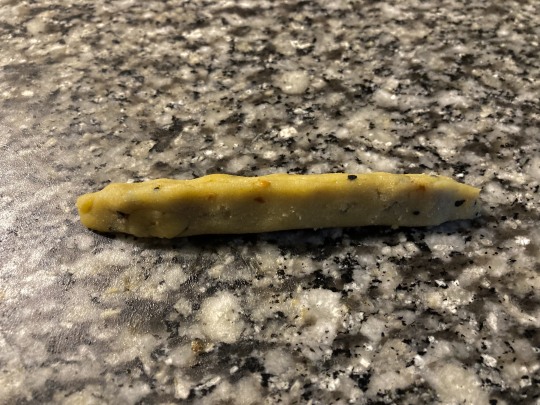
4. Roll the dough log out again to produce a thin, long rope a little bit thinner at the very ends than at the center. Press one side of the rope over the other to form a circle and press to seal.
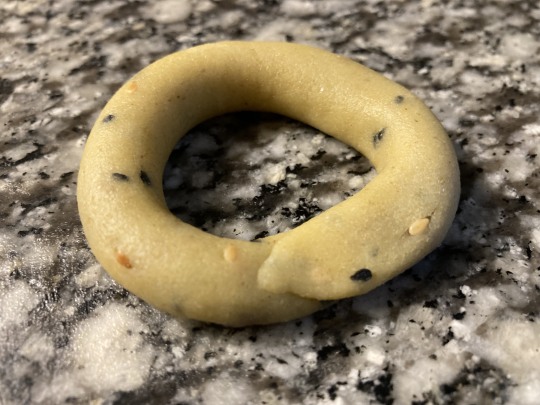
5. Repeat until all the the dough and filling has been used, covering the dough you're not working with to keep it from drying out. Place each cookie on a prepared baking sheet.
To bake:
1. Bake ma'moul at 350 °F (175 °C) in the center of the oven for about 20 minutes, until very lightly golden brown. They will continue to firm up as they cool.
2. Increase oven heat to 400 °F (205 °C) and bake ka'k al-aswar in the top third of the oven for about 20 minutes, until golden brown.
Sprinkle cookies with powdered sugar, if desired. Store in an airtight container and serve with tea or coffee, or give to friends and neighbors.
394 notes
·
View notes
Photo

Food & Drink in Ancient Egypt
Food and drink in ancient Egypt relied on barley and wheat, the primary crops cultivated along the Nile. The Egyptian diet was based on bread, beer, and vegetables. Meat was expensive and only rarely eaten. The majority of people ate fairly basic meals, while the upper classes consumed more exotic and varied dishes.
Pantry Scene, Tomb of Menna
The Yorck Project (Public Domain)
Bread & Porridge
Breads and porridges were the base of the Egyptian diet. They were both typically made with barley or emmer wheat, the two staple crops of Egypt. Grain was ground by hand with stone querns to produce flour. Despite efforts to prevent it, grit and sand often found its way into flour while it was being processed and transported. Many mummies have teeth worn down from years of eating gritty bread.
Egyptian cuisine in fact allowed for the preparation of bread in all possible shapes: flat, conical, spherical, sometimes molded into shapes of objects or animals, and extremely varied ingredients could be added to the dough for sweetening or aroma: lupine seeds, coriander, a decoction of figs, and poppy or ryegrass seeds. (Tallet, 320)
The most common style of bread was a dense flatbread made with flour, salt, and water. The dough was typically formed into round or triangular shapes, but it could also be shaped into human or animal figures. This could be baked on a stone inside an oven, on the floor of the oven itself, or even buried in hot embers.
Because bread was so important, many different varieties were invented. Some types of bread included fats, oils, eggs, or dairy in addition to the basic ingredients of flour and water. Leavening was used to create fluffier loaves. Special types of ovens and pans were used to bake bread of different shapes and consistencies. Bread was sometimes topped with seeds, seasonings or nuts before baking.
Model of Bakers from Meketre's Tomb
Metropolitan Museum of Art (Copyright)
Continue reading...
45 notes
·
View notes
Text
I want to make information on Lithuanian folklore in English more public so I am uploading the threads that until now were only on my Twitter. I present to you a comprehensive thread on aitvarai, the ancient Lithuanian deities of the skies
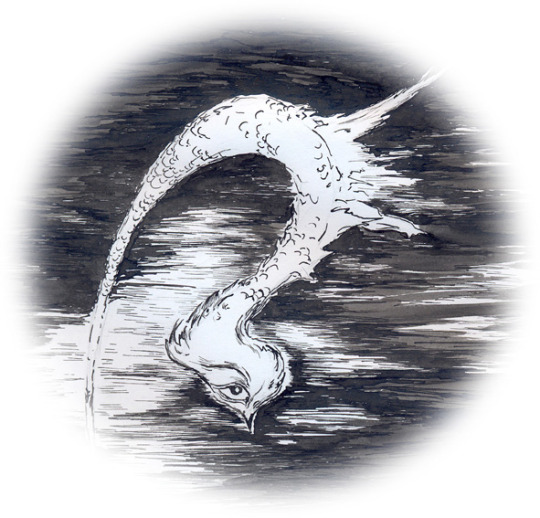
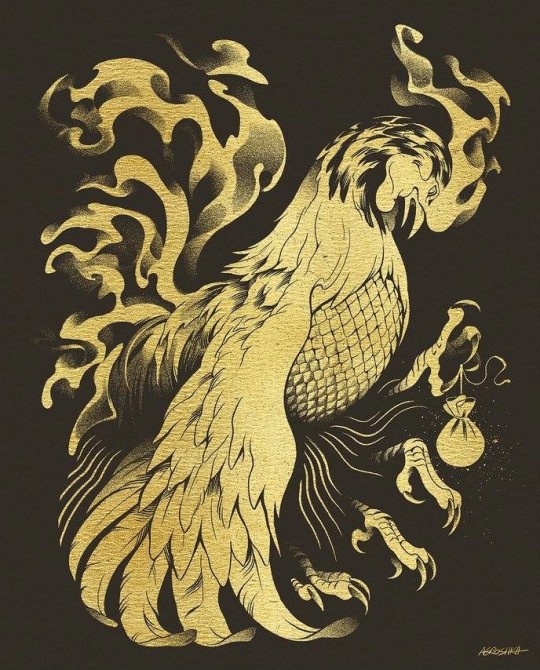
(art credits: Neringa Meškauskaitė, Agroshka )
Aitvarai (etymologically "ones to appease" or "irrepressible force") are domestic creatures associated with all 4 elements: a comet of fire which harnesses wind for chaos, helping Earth and its people while being chased and punished by Perkūnas for stealing water.
Most commonly a black rooster, they can appear as a variety of creatures: different kinds of black birds, grass snakes, whirlwinds, comets and even men if they fall in love with a woman that they want to marry.
Though very powerful ancient beings, Aitvarai choose to associate themselves with people, with villagers being able to either hatch them from an egg of a 7 year old rooster or attract them by leaving out hot, untouched meals like porridge and scrambled eggs.
When part of a household, the duties of an aitvaras were to bring riches to his caretakers, either as money (money carrying aitvarai were golden, deep red or silver in coloration) or as wheat (grey and black colors). Note that aitvarai only served the poor, tricking the wealthy people who tried to use them.
Aitvarai were both a blessing and a curse: while they did bring wealth, they did it by stealing from the neighbors of their master, making them most hated in the local village. They were also clingy and dangerous to keep, burning down the houses of those who mishandled them by feeding them manure, tampering with their meals or disobeying the rules they set for the person.
It is said however that their thieving, evil nature was a characteristic given to them by the Catholic church, which wanted to demonize every pagan creature in Baltic mythology.
In fact, aitvarai were considered genuine problems by those who believed that they would steal from them: from warding off statuettes in granaries to court cases from 1700's accusing people of harboring an aitvaras (I found only one source claiming this, so take it with a grain of salt).
However, the desire to have an aitvaras was apparent as well, shown by modifications peasants would make to their homes: holes in the doors of granaries would be made so an aitvaras could enter the home easily.
Some rituals for stealing back from a flying aitvaras exist as well, ranging from simply showing it your bottom, to cutting oneself with a rusty knife, pinning the corner of your jacket to the ground, ripping or otherwise ruining clothing.
Even if the reaction of people to them was mixed, aitvarai were considered pests by the gods due to their tendency to drink/hoard water, for which they were struck dead by Perkūnas, exploding into sparks that caused forest fires, the thunder god's lightning forming ponds, holes and swamps, terraforming the earth.
#lithuania#mythology#folklore#lithuanian folklore#lithuanian mythology#aitvaras#aitvarai#eastern europe#Viltės threads
169 notes
·
View notes
Text
A hundred years ago, the plant scientist Arthur Watkins launched a remarkable project. He began collecting samples of wheat from all over the globe, nagging consuls and business agents across the British empire and beyond to supply him with grain from local markets.
His persistence was exceptional and, a century later, it is about to reap dramatic results. A UK-Chinese collaboration has sequenced the DNA of all the 827 kinds of wheat, assembled by Watkins, that have been nurtured at the John Innes Centre near Norwich for most of the past century.
In doing so, scientists have created a genetic goldmine by pinpointing previously unknown genes that are now being used to create hardy varieties with improved yields that could help feed Earth’s swelling population.
Strains are now being developed that include wheat which is able to grow in salty soil, while researchers at Punjab Agricultural University are working to improve disease resistance from seeds that they received from the John Innes Centre. Other strains include those that would reduce the need for nitrogen fertilisers, the manufacture of which is a major source of carbon emissions.
“Essentially we have uncovered a goldmine,” said Simon Griffiths, a geneticist at the John Innes Centre and one of the project’s leaders.
“This is going to make an enormous difference to our ability to feed the world as it gets hotter and agriculture comes under increasing climatic strain.”
Today, one in five calories consumed by humans come from wheat, and every year the crop is eaten by more and more people as the world’s population continues to grow.
“Wheat has been a cornerstone of human civilisation,” added Griffiths. “In regions such as Europe, north Africa, large parts of Asia, and subsequently North America, its cultivation fed great empires, from ancient Egypt’s to the growth of modern Britain.”
17 notes
·
View notes
Text
The guardians of the Pharaoh
Rebirth of ancient secrets

I don't own Yugioh or it's characters.
Chapter 3
In ancient Egypt…
7 years had passed since Heba was born and things in the small broken down village had changed for the better. By some miracle vegetation had started to grow around the area, making the area look vibrant and lush. Water had returned to the once dry wells and a fresh stream ran through the outskirts of village. The people could now grow wheat and other grains to feed their families, and they could trade what was left. The diseases that once infected the people had disappeared over night. They no longer liked sickly or starved, they had grown into a hearty and lively group that supported and helped each other. The houses had been restored and given now life. Many children had been born during the past 7 years as there were now resources to provide for the little ones. People believed that the gods had given them a second chance at life when the strange little boy was born.
Speaking of the child, Heba had grown into a sweet and kind little soul who could do no wrong. He was always helping out his family when he wasn’t playing with the other children. And everything he did he did with a smile on his face. His pale skin remained despite the harsh desert sun which confused everyone, he seemed out of placed amongst his people but no one really minded for they believed he was a miracle from the gods. Life had returned to the town when he was born and they would always be grateful.
Heba’s parents had some fears though about their son. For one…strange things would happen around him…when animals and wildlife returned to the area, they would catch Heba speaking to them as if he understood them and they would sit still and listen to the boy yammer on as if they could understand him. He would speak to the plants too sometimes and the next day plant would be two or three times bigger than the day before. And everyone one he came across would end up admiring his sweet and innocent nature as if they had been enchanted by him.
The second concern his parents had come the day they had travelled to the royal city to trade the grains wheat their village had farmed.
Heba was over joyed to be visiting a new place. All he had known was his home and the people that lived with in it. He had never known hardship and grief, just joy and prosperity. He loved playing with the other kids and interacting with the wildlife. He enjoyed listening to their stories and learning about them, even the vegetation had stories to tell. But he felt out of place sometimes…no one else could hear the animals like he could and sometimes others looked at him strange when he was having a conversation with the plants. But honestly he didn’t care; he was having fun and enjoying his life.
The pale boy held his mother’s hand while they were exploring the market place, he was wearing a brown cloak with the hood pulled over his head to shield him from the harsh sun, (not that he ever burned despite his pale complextion). Their father was elsewhere looking for a buyer for the wheat and grains. Heba’s eyes scanned the area, looking at all the wonderful and new things. He tried to pull free from his mother’s grasp when he saw a stall selling toys that had been carved out of wood but she kept a firm grasp on his hand, “My little light you can’t run off in a place like this. You could get lost.”
“But mama look at all this! Isn’t it amazing? Look there’s even a shop that sells honeyed sweets! Can’t we take some home for the other children?” he begged his mother. Sure the village had recovered from its disastrous state but the place was still small with very few people living there. So they didn’t have the variety of goods that this market had. The small boy’s mother sighed softly, her son was always thinking of others before he even considered his own. He barely had anything as he always gave to those who needed it more.
“Heba we don’t have money to get them for the other children. The money your father is making has for go for supplies needed to plow the fields…”
“Oh…you’re right…” the small boy said letting out a soft sigh.
His mother smiled, and rested her hand on his face, “Maybe someday we can farm honey, then we can make our own sweets for the children back home.” This seemed to cheer her son up as he was smiling again.
They continued to explore the market, eventually somehow reaching the large courtyard outside the palace gates. The court yard was filled with people, making the boy curious as to what was going on, “Mama why is everyone here?”
“Well my little star do you see up there?” she pointed to the balcony overlooking the courtyard, “That is where the Pharaoh stands once a day to greet his people.”
“Oh…that’s nice of him.” Heba said with a giggle. His mother shook her head as she smiled. She would explain to the child later what the significance of it was.
A moment later Pharaoh stepped out onto the balcony, the crowd of people bowing their heads. Heba’s mother encourages her son to do the same as she bows her own head.
King Aknamkanon gazed upon his subjects, before looking back at his son, now 7 years old. The boy was a bit nervous as this would be the first time he greets the people with his father. The pharaoh holds his hand out with child, an encouraging smile on his face. Hesitantly Atem stepped towards his father, the sun hitting his tanned skin as he peered over the railing, his eyes widened at all the people that were there to give their praise to them…
Heba heard the Pharaoh starting to speaking, introducing his son, Prince Atem. Everyone raised their head to look up at the young prince, including the pale child. His eyes widened at the sight before him, up on the balcony stood a child that looked almost identical to him, give or take a few details. They shared the same hair, the same face but their eyes were different and their skin tone wasn’t the same either. However they could very well look related…
While Heba was looking at the other boy with wonder…his mother looked on with fear. Her sons dopple ganger stood before her…this could be trouble for her and her family. She looked around, noticing a few shady looking men were looking at her. Confused she turned to her son, only to realize his hood had fallen back, revealing his strange hair and light complexion.
Quickly she pulled his hood over his head again before running back to the mark with him, wishing to get back to her husband so that they could leave this place, not realizing they were being followed by the men who had seen the prince’s look alike.
Back to the present day.
It had been days after the incident with the Pharaoh’s tablet and Lillian finally started to awaken. Her body felt heavy and hurt all over, her nerves were screaming at her to stay still as she tried to move. Her eyes slowly opened, her vision was blurry for a moment before clearing. She found that she was lying in her bed in the room Ishizu had given her when she joined the tomb keepers many months ago…Shadi had brought her to Ishizu to see if the Millennium necklace would work on the teenager, which unsurprisingly didn't.
The two keepers of the Millennium items didn’t know what to do with Lillian. Do they let her go or do they lock her away or do they execute her. Instead they decided to give her a chance to learn about the Millennium items and learn about the Pharaoh whose tomb they protected. They offered this choice to the girl, confusing the raven haired teen. Eventually she agreed but only after seeing the very tablet that depicted an image of her brother and the man she loved…she explained to the tomb keepers that she was searching for her father, explaining the weird things that had been happening to her before she came to Egypt (keeping it hidden that her brother just so happen to look like the guy from 5000 years ago and that he had one of the Millennium puzzle). They agreed to help her if she stayed with them.
Now nearly a year later, she had learned nothing about her father’s whereabouts and had instead learned a lot about the unnamed Pharaoh and the history of duel monsters and many other secrets…
Lillian slowly sat up and held her head as it throbbed, wincing when she moved her arms, discovering that they were covered in bandages. She examined the wrappings, finding splotches of blood on the fabric…she stumbled out of bed, a wave of nausea and dizziness hitting her. She made her way over to the dresser that stood in the corner that had a large mirror attached to the top. She slowly started to remove the bandages, revealing her newly inked skin. She started to tremble as she dropped the wrappings to the floor, looking at the images that not decorated her arms. They were duel monsters from what she could tell, sea and water monsters to be specific.
A moment later Ishizu’s entered the room carrying a tray with fresh bandages and ointment. The Egyptian woman was surprised to see her friend was up and about, she quickly set the tray down, “You shouldn’t be out of bed.” She took a step towards Lillian but the shaking teen stepped back. She looked Ishizu with suspicion and fear in her eyes, “Did…did you do this me?!” she indicated to her arms. Ishizu spoke in a calm voice, wanting to reassure Lillian, “Do you not remember what happened? The pharaoh’s tablet? It was activated somehow…a wave of power surged from it and I was knocked out. When I can too you were on the ground…like this…” she motioned to Lillian’s arms.
Images of being surrounded by water…nearly drowning…immense pain…it started flooding back to the raven-haired girl. She felt unsteady on her feet as Ishizu wrapped an arm around her middle and helped her back to bed, sitting her down on the bed before retrieving the tray.
She carefully cleaned the areas covered in ink before applying ointment and wrapping them up in bandages again. Lillian watches in silence, flinching every now and then, “Did you have to do this for your brother after his initiation?” Ishizu’s hands stilled for a moment before she nodded, “Yes. Although he was only cut and scarred. Yours seems to be inked in like tattoos.” She was soon finished and started to clean up the supplies.
“I need to go home.” Lillian said softly. Ishizu didn’t respond. “I…saw something while I was trapped in the water…and…I think my brother might be in danger…”
The Egyptian woman took the tray and headed to the door, stopping for a moment and looking back at Lillian, “You should get some more rest. I will begin preparations for your departure.” There is silence between them again as Lillian lies down, pulling the covers over herself.
Ishizu turns to leave when the other girl speaks softly, “Thank you Ishizu…you really are a good friend.” This made the tomb keeper smile as she walked away.
Back in Domino.
Things were not going well for Seto Kaiba. Let’s go down the list, first he kidnapped the old man from the game shop. Then he duelled him for his Blue Eyes and won, he then proceeded to rip up the card so that it could never be used against him. He then duelled Yugi (who seemed to somehow change which shouldn’t be possible. Maybe it was just the lights of the duel arena) and actually lost! The twerp somehow summoned Exodia and beat his 3 Blue eyes! Then to make matters worse, the kid did some kind of weird thing that seemed to have messed with his head before he passed out.
When he came to he was laying on the couch in his office, pain shooting through his head as if someone had stabbed a white hot poker through it. He stared up at the ceiling, wonder how he had gotten there. Mokuba had probably called security and had them escort him here. How humiliating.
He growled as he sat up and rubbed his forehead, trying to make the pain go away. It felt like something was missing…like something had been ripped away from him. He was probably just getting a migraine. The CEO stood up and made his way over to his desk, yanking open the drawer where he kept his pain pills. He reached for the bottle but stopped when he saw a familiar photo frame, a wave of emotions flowed through him as he forgot about the meds and instead picked up the frame. Sitting down in his chair he stared at the image of his best and only friend…the girl who had stolen his heart and who left him a year ago…he ran his fingers the picture, tracing her cheek as he gazed at her smile and bright blue eyes. He had almost forgotten how she looked…how she made his heart race...how much he missed her…how he longed to hear her voice again…to she her smile again…
Suddenly something came to mind, his eyes widening as he remember something from the previous day when he entered that stupid game shop…his hands shook as he remember seeing a different framed photo that held a happy family…he remember a seeing a familiar face amongst them. He thinks back to all the times she had mentioned that her grandfather owned a game store…how her brother looked more like the old man than their father or mother. He drops the photo frame as he steps back, his heart beating faster as he feels panic starting to sink in.
He thinks back to everything Lillian had ever mentioned about her family…every little detail flooded back into his mind. Even during his duels with Yugi and his grandfather something was screaming at him to stop, even as he played his Blue eyes card…the one Lillian had given him, he remembered how it felt like it was burning his skin when he used it to bring harm to the old man and how he tried to used it to intimidate Yugi…his subconscious was trying to tell him the entire time that what he was doing was…wrong…that he was hurting the family of someone close to him…one of the only two people that he ever cared about…
He slammed his fists onto his desk as it felt like he was starting to hyperventilate. Why was he feeling like this? He shouldn’t be, he was stronger than that! He had built up a wall around this ridiculous and nonsense feelings for months now, he had grown bitter and prideful, wanting to forget his trauma and pain. He was Seto god damn Kaiba! And he was also the man that had hospitalized the love of his life’s grandfather, torn up his most prized possession and then terrorized her brother. Oh god what had he done?!
Breathing heavily he swiping everything off his desk in a fit of rage, his computer crashing to the ground and breaking, paper scattering across the floor. He proceeded to trash his office in anger and frustration. He picked up his chair and was about to throw it when he heard glass breaking under his foot. Looking down he saw the photo of Lillian that he had dropped. Setting the chair down quickly he kneeled down and picked up the broken frame and tried to dust away the broken glass, removing the photo to prevent it from sustaining anymore damage as the shards of glass had made a few dents in the image.
He sat back, his back against the floor to ceiling window, holding the picture as if it were the most precious thing in the world…tears blurred his vision but he couldn’t care. He had hurt the family of his beloved, a family that she thought she would never have and treasured them all, a loving mother and father, a wise and kind grandfather and a little brother who Lillian adored more than anything else. They were her heart and Seto had tried to shatter it…grief washed over him, realizing that the person he had become in the past year was gone…and all that was left was the pain and sorrow that he held in for years. His step father would call him pathetic and weak if he saw him now but he couldn’t care…because the only thing that went through his mind was the fact that Lillian was going to hate him when she got back and found out what he had down…and maybe…just maybe…he deserved it…
14 notes
·
View notes
Text
The (Real) Stardew Valley Farm Update
Okay, so I meant to post way more about this, but the past year involved a truly inhumane number of medical appointments including driving an hour away 2-3 times a week all summer, so . . . not a lot of time for gardening and not much energy for posting. Fingers crossed that this year goes better!
To refresh, I'm trying to grow everything from Stardew Valley in our yard, with substitutions as needed, preferably with Midwest USA native plants. 2021 and 2022 can be found here, with my original plans for what I was going to do for 2023 and 2024.
2021: Additions/Corrections
Starfruit - Native wood sorrel (thanks to @alienskyler1 for teaching me that they were related!)
Cave Carrot - Queen Ann’s Lace, AKA wild carrot (also plenty of cultivated carrots)
2023: What Actually Happened
Garlic - Native wild garlic
Blueberries
Wild Horseradish - Not wild, contained in a raised bed on concrete because I don't want it to get too wild (also a mint containment system!)
Hops - Teamaker hops which is good for tea. It struggled in the summer so maybe tea this year?
Winter Root - I went with hopniss, aka groundnuts, a native vine with tubers you dig up in winter
Fiddlehead Fern - Native hayscented fern
Poppy - Native wood poppy
The ferns and poppies were planted in the fall, so hopefully they come up well this spring!
2024: The Plan
Blue Jazz - Native Ozark Bluestar (one of my winter sowing seeds)
Apricot Tree - Native passionflower vine, known as wild apricot (winter sowing)
Sunflower - Winter sowing two native sunflowers, and will hopefully be growing some massive non-native ones as well
Summer Spangle - Native prairie lily (winter sowing)
Palm Tree/Coconut - Native palm sedge. I'll grow this from seed once it warms up
Pineapple - White strawberries (pineberries)
Pumpkin
Melon
Oak Tree - Native dwarf chinquapin oak (it's been shockingly hard to get my hands on one)
Sweet Pea
Hot Pepper
Parsnip
Corn
Ancient Fruit - Native Aronia (they're blueish and have lots of antioxidants so you live to be ancient)
We'll see how it goes!
Planned for 2025 and Beyond:
Potato
Red Cabbage
Artichoke - Native Jerusalem artichokes
Cactus Fruit - Native prickly pear cactus
Yam
Bok Choy
Leek
Blackberry
Holly - Native winterberry holly
Crystal Fruit - Honey berries, which produce fruit earlier than anything else
Mushrooms - I'm just gonna ignore varieties and try some plugs or similar
???????
Still trying to figure out doable substitutes for these
Rice
Wheat
Qi Fruit - Very creepy
Taro Root - I would have to plant it in pots
Snow Yam
Mahogany Tree
Peach Tree
Pomegranate Tree - I could try Russian pomegranates?
I'll try to do a better job this year keeping everyone updated. It's been such a fun project and I'm so glad I decided to go for it!
#the (real) stardew valley farm#the habitat ring#gardening#don’t be a petaq grow native plants#stardew valley#sdv#I make bad decisions but at least the wildlife love me
11 notes
·
View notes
Text
Shades of the Mage
(below the cut because it's just me yapping about the history of the previous Mages for who knows how long)
The Hawkmoth Mage is widely known for never showing up in person at any of the places they are reportedly seen in. Instead, they use what are called "Shades" to do their work.
In order to explain a shade, one must go over a brief history of the Mages and the Locust Mother.
Brief History
The Locust Mother is supposedly an ancient Threnodian whose dead body was found in a wheat field in a run-down farming village far out of the political realm of Jinzhou City. This area is now Fracsidus territory and is considered a dead land.
300 years ago, the Blue Morpho Mage Uriel performed rituals on the dead Threnodian in an attempt to understand more about it in a time where there wasn't a lot of knowledge on such creatures.
In his arrogance, he unintentionally reawakened the creature, leading to his death and the decay of the farmland.
Following Uriel's death, two other mages would emerge 100 years later and 200 years later receptively.
The first was Michael, the Wolf Spider Mage, who tried to destroy the Locust Mother, but in his failure, ended up releasing the plague onto the town, starting the longest famine on record.
The second to come was Raphael. Despite what the name may suggest, Raphael was in fact a young woman known as the Red Locust Mage. Her attempts to reseal the Threnodian are largely credited as the greatest feats of that century, as they were the only ones to be succesful.
The last mage to be recorded in history is currently the Hawkmoth Mage who is a follower of the Locust Mother.
Ties to the Three Shades
When he gets a hold of a dead body, they are fed to the Locust Mother as a sacrificial offering and their souls are then melded together within her body. This is the most hypothesized reason as to why he has his powers, especially when taking the past three recorded mages and their strange ties to his Shades.
The Shades are three variations of himself that he uses to represent himself when he does not want to be somewhere. This can be for a number of reasons, though mostly this is due to his susceptibility to injury and having very specific medical issues. He is not one to risk his life when he doesn't need to.
While he has three main Shades, there are a few lesser variants that are only used as distractions and/or for communication purposes, not for fighting in combat. These lesser Shades are usually formed through small insects like ants or flies.
The three most documented Shades are the Spider Shade, Locust Shade, and the Moth Shade.
Much like many Jinzhou researchers have suspected, along with the intel from the Black Shores, these Shades were created using the remnant powers and souls from the previous two mages, Raphael and Michael (credit. Dr. ------ and Dr. Xiangli Yao).
Each Shade has their own voice, giving merit to the idea that each Shade is the soul of a different person who has been sacrificed to the Locust mother.
Spider Shade (Wolf Spider Mage)
The Spider Shade (Michael) is a front forward attacker who hits hard and moves slow, using large weaponry. Everything in relation to the Spider Shade is made from a variety of creatures in the Arachnida classification.
While it's main focus of attack is using large weaponry, it cannot physically grasp any object due to poor motor skills in its hands, presumably because of either a poor connection to the Hawkmoth Mage himself or a poor tie to the original soul of Michael the Wolf Spider Mage.
The Spider Shade, much like all Shades regardless of how powerful, have the ability to split themselves apart and reform elsewhere, though this is more prevalent in lesser shades because of their lesser uses in battle.
Though communication has been scarce, few people have been able to identify a deep and smooth voice from the previous soul that is trapped within the Shade and being puppetted by the Mage.
Some speculate that this is the Hawkmoth Mage speaking through Michael's voice.
Locust Shade (Red Locust Mage)
Unlike what the name suggests, this Shade does not have strong ties to the Locust Mother herself. The Locust Shade (Raphael) is a Shade that excels in magical abilities, specifically in holding a person in place.
This Shade attacks from afar and is mostly used in reconnaissance missions. Many soldiers theorize that this Shade is the source of the rattling on the battlefields that alerts Fracsidus members of approaching attackers. This theory is further supported by reported sluggish movement in soldier's legs, some going as far to say they halted movements all together.
Much like the Spider Shade, and for the same reasons, this Shade is also unable to grasp physical objects.
The voice of the Locust Shade has been heard more often than the Spider Shade, but reports are still in short supply. Many claim her to have the voice of a woman in her mid-30's with a very noticeable accent and a threatening aura, very different from the recorded history of what Raphael was really like.
Lesser Shades
As stated before, the lesser Shades don't do much other than appear ominously in areas the Hawkmoth Mage has been (whether in person or through another Shade is still not known). These lesser Shades are the only communication that anyone outside of the Fracsidus.
Official reports state that the Mage has been able to speak through these lesser Shades, but that the voice sounds like a conjoined mix of many different people speaking at once.
Moth Shade (Possibly the Hawkmoth Mage or the remnant of the Blue Morpho Mage)
This Shade is considered the most dangerous as it is the first and only Shade to be brave enough to appear in public spaces and speak fluently with people. It's fighting style consists of surrounding its opponent in insects of different kinds and creating mass hallucinations.
This Shade is both powerful and fast, hitting quickly and many times over a long period of time. Opponents with often pass out from pain before they are killed by the Shade.
The Moth Shade is often accompanied by the Spider and Locust Shade, creating a terrifying duo where one will hold the enemy in place and the other two will take the unfortunate person out.
It is the only Shade that has shown the ability to interact with physical objects, indicating that this Shade is directly tied to the Hawkmoth Mage himself.
This Shade has the voice of a young man in his mid to late twenties and gives off a heavy aura of someone who is not experienced in their craft and does more vocal work than they do physically practice what they say.
This has led to the hypothesis that this is not the voice of the Hawkmoth Mage himself, as it would be unwise to use one's own voice when it could lead to a faster arrest and is instead the voice of the final Mage with no Shade to physically represent it, Uriel.
Further evidence to back up this claim is that the Hawkmoth Mage has frequently expressed displeasure with butterflies, and given that Uriel is the Blue Morpho Mage, who is heavily tied to butterflies in historical records, this gives weight to such an idea.
Shades and weak ties to the Hawkmoth Mage
The different Shades have each expressed a variation of how long they appear to be able to be formed and exist at a given time. As the Hawkmoth Mage's connection grows weaker, the Shade's duration dwindles.
The lesser Shades appear for no longer than thirty minutes and very rarely will there be more than two lesser Shades present at the same time. This is just enough time to get a message across and throw Midnight Rangers off the Mage's tail. This also presents the possibility that these lesser Shades have the weakest connection to the Mage and are made from souls that have almost passed on.
The Spider and Locust Shade are each able to appear for at most three hours, making them formidable foes in skirmishes, but never long-winded battles. They are great support and excellent at wearing their enemy down for the other members of the Fracsidus, usually resulting in a great loss for the opponents of the Fracsidus. These two Shades present a larger possibility for their souls having a stronger tie to the Hawkmoth Mage as their theoretical previous identities (Wolf Spider and Red locust Mage) have ties to the idea of the Locust Mother's Mages.
The Moth Shade, much like the pattern suggests, has the strongest connection to the Hawkmoth Mage by duration alone. This Shade has been seen existing for weeks at a time, the longest being just over two weeks with the shortest being three days. This is supposedly because it is the most direct link to the Hawkmoth Mage himself, though nothing can be proved with 100% accuracy just yet.
Conclusion
The Hawkmoth Mage has presented themself as a dangerous entity in Jinzhou and one of the most powerful Overseers in the Fracsidus.
Though, after the Mage's five-year absence, there has been a large dip in the sightings of his Shades and an alarming spike in reports of people saying that he has started to physically appear at scenes.
This is especially alarming considering the recent event of Overseer Scar's recent arrest.
#a hexing (hawkmoth)#call from afar (character lore)#IT'S DONE IT'S DONE THIS TOOK ME FOREVER#did i only make this because I wanted to do voice claims of each shade?#yes#do i regret it?#no
3 notes
·
View notes
Text
Isekai Problems: Planting Roots
So what zones are your characters in?
Here I’m referring to the USDA plant hardiness zones for growing regions. There are similar maps for Europe; I saw one in a book on heritage roses once. So I’d guess other areas have made them as well. But the USDA’s the one I know best. It’s also the one I feel personally frustrated by, because I know it best.
Long story short. Hardiness zones are determined by the minimum temperatures the area reaches; you find Zone 1 and 2 up in inner Alaska, you find subtropical to tropical 9 and 10 in bits of Florida, Louisiana, and Texas. Plants can also be sorted by how heat tolerant they are, but freezing to death is a pretty good measure of where a plant can’t make it. If you look at a package of seeds marketed in the U.S., you’ll find the Hardiness Zone map on the back, often with suggested planting times.
However. Local weather patterns can make zones tricky.
Remember how I pointed out zone 9 in Florida? In fact, the Hardiness Zone map shows near the entire Gulf Coast as zone 9. If you look on a larger-scale and more finely detailed map, most of the near-shore will show up as zone 9a - not as warm as, say, central Florida at 9b.
Except that every two to three years there tends to be at least one hard freeze (temps dropping overnight below about 15 F), making the area technically zone 8b. So unless you’re lucky and have cut back and wrapped tender plants, all your banana trees and citrus go bye-bye.
And yet, because it’s not that cold every year, tulips and apple trees - any plants that need some cold dormancy - are likely to keel over too.
All of which means introducing new plants is always a roll of the dice. Can they take the cold and the heat?
If you’re going to introduce new crops, as characters sometimes do in isekai, have some idea about what conditions they need, and whether or not your new locale has them. Cochineal is one of the most beautiful, vibrant, colorfast reds in nature. But if you try to introduce it as a crop in, say, Siberia, when the cochineal scale insect lives on the warmth-loving Opuntia cactus... biologists and ecologists will have a sad. Really.
Likewise if you tried to grow Korean stone pines (nutritious seeds! Medicinal compounds!) in the fantasy equivalent of South Florida’s heat and humidity, people will talk.
You may have better luck with more conventional food crops. Rice, corn, wheat, potatoes - all of these have hundreds if not thousands of varieties, adapted for different conditions. There are rice varieties that tolerate salt enough to grow near shorelines, and a slow-growing, slime-shedding variety of ancient corn that hosts its own nitrogen-fixing bacteria; an awesomely useful feature usually only found in legumes. Human ingenuity and diligent searching may turn up or create a variety of a crop that can survive in what would normally be extreme conditions for that plant. But your story will feel more realistic if you make it clear you’re using magic or bioengineering to get oranges to survive in arctic tundra, or lingonberries in the Sahara. People have an idea of where plants flourish; putting them out of place without a good explanation dents suspension of disbelief.
Of course, temperature’s not the only consideration. Rainfall, soil minerals; is the earth acid or basic, sandy or heavy clay? All of these and more play a part. You don’t have to be an agronomist. Just check out some real-life analogues to what you’re working with to get ideas of what your characters need to do, and what curveballs you can throw at them.
And for goodness’ sake, if the original tamers of a crop grow it in a specific way that doesn’t use the whole field, don’t automatically assume it’s inefficient and you can do it better. Of such decisions are potato famines made....
13 notes
·
View notes
Text
ROY G. BIV Tag Game
Thanks for the tag @illarian-rambling! These are all coming from books 1 and 2 of my WIP, The Testaments of the Green Sea.
Um I suppose content warning for violence and blood for the first one, if that is something that you are uncomfortable with, skip red and go to orange.
As he bent to continue his impromptu drink, the deck erupted. It was as if the wood itself had chosen to spring at the man, or the sea had punched through the ship's hull. The massive hand closed around the front of his skull, the rough and leathery palm engulfed the entirety of his face and muffled his shrieks. Blood spattered the deck, mixing with the wine. The crunch and the snap of bone and of wood were nearly indistinguishable. His form was pulled through the jagged hole, ribs and shoulders cracked and folded in on themselves, the sheer force ripped the left arm from the body. A spray of red painted the deck where a moment before he had stood. And then he was gone.
.
Of course, it's been great having more than just me down here. After Zanuk died, I was getting worried that Wadikir was never going to get another slave for the Hall, not that I’m happy that you and Suru are slaves, it's just if you had to be slaves anywhere I’m glad it was here, and -” Now it was Shela’s turn to blush; she could feel the heat rising in her cheeks. Her last few words had been barely more than a squeak. She quickly pivoted away from Otilia, careful not to send the scrolls rolling across the floor again. She wasn’t entirely sure why she felt so embarrassed, but she was. The two walked in silence through the labyrinthian pathways, past the flickering clay lamps that threw their dancing orange light over the ancient walls. Both were deeply mired in their own imaginations. So I was right, Otilia thought, It’s not just me. Otilia couldn’t help but smile.
.
“How long is this tunnel?” Narul groaned. “You’re almost at the end sir, just beyond this bend.” The tunnel abruptly opened into a large octagonal room, its walls carved from yellow stone, punctuated by three doors as well as the tunnel from which Narul had emerged. At its center lay a large round pool, shallow on one side and deeper on the other. Placed around this pool were various benches, cushions, and vases. He looked at the strange clay bottles which hung from the ceiling like exotic fruits and at the bronze tools laid out on a nearby table; pincers, hooks, and ladles among other things. For the slaves of Labisaj, baths had consisted of water pulled from the well poured over the body once or twice with a bucket, just enough to get the majority of the grime off of the skin. He had no idea what he was expected to do here, there was no bucket to be seen. On a whim, he walked towards the water. “Do I just get in?” He turned to the attendants. They looked at him, perplexed. “No sir, it's not heated yet, and you have not been cleaned.” “Cleaned? Isn’t that what the water’s for?”
.
The production was extravagant, even for Ninma. Dish after dish were presented to the tables. Fish and crusteacans played a central roll; stewed, boiled, baked, fried, even raw. Narul lost count of the varieties. After a short while, each silver tray would be whisked off by the servants to some unknown location, often with the majority of the food still left on them. Along with fish there came slabs of meat; beef and goat, nearly every dish drizzled with sauces of vinegar or mustard or else coated in herbs and oils. Occasionally vegetables; peeled asparagus, cabbage, and other greens would make an appearance and would be almost entirely ignored. Bowls of beer and wine were constantly replenished, with the banqueters drinking from golden ladels dipped directly in the bowls. Fluffy wheat bread too was in constant supply, this was only the second time Narul had tried wheat bread, barley being far more common. Otilia looked up from a dish of tiny octopi swimming in vinegar and sesame oil, to see Shela across the room, a sloshing bowl of beer balanced on her head. She smiled and waved. Shela frowned, eyes darting from side to side and mouthed. “We need to talk….tonight…” Otilia frowned, but nodded. Shela smiled weakly, setting the bowl at one of the tables and returned to the kitchen to receive yet more food for the banquet. The sensation of fullness was not one with which Narul had ever been particularly familiar. He leaned back with a groan, one hand on his belly, he felt somewhat sick. Ninma looked similarly green-faced.
.
It was dark now. He was alone. Did he dare call out for help? Only the reflection of the moon lit the world around him. There were no birds, no animals, just the soft whistle of the wind. He looked for something to cover himself, to warm his aching body, he found nothing but more snow. He could swear his fingers were turning blue. As he felt his breathing slow and his eyelids grow heavy, he saw two figures coming towards him through the snow, people he thought, what kind, he couldn’t be sure. Were they Apunian’s coming to kill him? It didn’t matter, they were something. " Help me." He pleaded as the figure drew near.
.
“I hope you have saved some wine and women for me!” A voice crowed as the tent flaps were pushed aside. Four men entered, still dressed in their armor, they were all southern nobility from the cities of Kotsa, Felu, and Kitsu. Tizanush, son of Atab the lord of Kotsa, was at their head. He was tall and handsome, with flowing brown hair and broad shoulders. He could have leapt from the mouth of a poet or from the chisel of an artist. He was new to war, having only joined Akard’s cabinet the year before when his father and by extension the city of Kotsa had sworn allegiance to the throne of Labisaj. The other nobles greeted him cordially, offering him wine and food, one of the prettier girls was even shoved his way. As he stood he began to undress, taking of his armor, and this clothing underneath, leaving his body bare. He grinned and flexed. “A true man doesn’t mind the cold. Even if parts of him might.” The others laughed. Zatar did not. He eyed the brat and his sword, coldly. Tizanush bent to retrieve his silken belt. The lordling inspected the indigo fabric for a moment and then tied it over his naked waist, and hung his sword from it. It was a beautiful blade, mountain bronze perhaps from Bur or Kurk, long and thin like a rapier in the the style of the southerners best-suited for slipping between armor, rather than hacking or slashing.
.
I should head back, I’ll already be later than Suru said I should be. Narul gazed at the shadows stretching away from the descending sun. It was only as he stood that he saw the figure bending to drink at the water’s edge. He had seen wolf pelts in the markets or draped over the shoulders of street performers in costume, but he had never seen a pelt still attached to the creature which had grown it. But even he knew that this beast was nothing like the creatures that had supplied those pelts. It was massive, the size of a horse, each paw as big as a man’s head. Its silvery fur seemed to glimmer a soft blue in the sun’s waning light. A stone came loose beneath the giant’s foot and clattered loudly against its peers. Narul swore under his breath as the beast straightened, its shaggy head turning owl like to see what had disturbed its drink. Narul felt a pang of fear as he looked into violet eyes, there were no irises nor whites, just dark pools like lost forest springs. It had the face of a human, smooth and hairless, its skin as pale as moonlight, its delicate lips the same golden hue as the sunset.
Tagging @hallowedfury, @treesandwords, and @peresephones
#writeblr#writing#writers on tumblr#fantasy#tag game!#worldbuilding#fantasy writing#testamentsofthegreensea#fantasy world#tag game#cw: gore#queer fantasy#cw blood#world building
8 notes
·
View notes
Text
Oh, nooo… What have we done. I was talking with ChatGPT a bit, and we somehow came up with the most ridiculous super hero parody. In fact, we made two of them. These are basically Superhero League of Hoboken fan characters, since they're so insanely silly. Check it out. —
The Senbei Senshi
Backstory: Trained in the ancient and sacred art of cracker combat by a hidden order of health-conscious monks, the Senbei Senshi travels the world promoting balance, discipline, and healthy snacking. Born in a pristine rice paddy at the foot of Mount Fuji, he views anything made with wheat or processed grains as inferior. He has rejected modern snack culture in favor of pure, unadulterated senbei.
Powers:
Rice Cracker Shuriken: Throws razor-sharp senbei that can slice through steel… or so he claims.
Gluten-Free Gale: Creates a whirlwind of health-conscious crackers to overwhelm his enemies, forcing them into submission with guilt over their poor snack choices.
Organic Smokescreen: Disappears into a puff of flourless rice powder when cornered, leaving behind a faint smell of soy sauce and a lecture on clean eating.
Fennel Finish: His ultimate move, where he hurls extra-thick taralli-like crackers at high velocity, boasting about their “subtle, refined flavors.”
Personality: The Senbei Senshi is the epitome of smug, constantly reminding everyone of the virtues of his rice crackers and why they’re nutritionally superior. He believes he’s a beacon of righteousness, showing the world the “correct” way to snack. His superiority complex is so massive that he refuses to even acknowledge the existence of other snacks, considering them unworthy. He speaks in dramatic, hushed tones, as though every cracker he tosses carries the weight of a centuries-old legacy.
Commentary: Picture a stoic, noble warrior dedicated to the way of the rice cracker. He believes his gluten-free, artisanal rice-based projectiles are far superior to anything his opponents could possibly muster. His fighting style is flawless, of course, and his moves are always accompanied by a smug speech about the purity of his rice crackers and the health benefits they bring.
This guy is just dying for a comic series or a cameo in a game like The Superhero League of Hoboken. He could be a perfect fit as a guest character who tries way too hard to impress the main team, only to be constantly mocked for his self-righteous attitude. —
Le Baguette Bruiser
Backstory: Le Baguette Bruiser — real name Jean-Pierre Croûte — was born in a small French village, raised on the finest bread in the world. From a young age, he trained in the art of baking, mastering the perfect crust, the soft interior, and the unmistakable crack of a freshly baked baguette. But Jean-Pierre found his true calling when he realized that bread wasn’t just for eating—it could also be a weapon of great power. Now, he travels the world, defending the honor of bread, especially the crusty French variety, using his baguettes to fight injustice (and unhealthy snacks).
Powers:
Baguette Baton: Wields a super-hardened baguette that can break through anything from shields to bad attitudes. The crispier the crust, the deadlier the blow.
Pain d’Éclair (Bread Lightning): Throws his baguettes with lightning speed, each hit delivering a crispy shock that knocks enemies off balance.
Bread Barrage: Summons an endless stream of freshly baked baguettes from his legendary bread oven, launching them in rapid succession like a bread-based machine gun.
Crusty Counter: When struck, he hardens his baguette to absorb the impact, then retaliates with an even crispier strike.
Personality: Le Baguette Bruiser is the definition of a proud French artisan. He believes that bread is life itself, and no meal is complete without a perfectly baked baguette. His pride in French cuisine knows no bounds, and he is constantly lamenting the rise of what he calls “inferior” bread substitutes, like crackers or flatbreads. He has a bit of a snobbish streak, but his heart is in the right place. He respects other culinary cultures, but only as long as they acknowledge the supremacy of bread.
Jean-Pierre, despite his deep love for all things French and his borderline fanaticism for le pain, has always found croissants to be too soft, too buttery, and too flaky for his tastes. In his mind, the true essence of French bread is its crust, and the baguette embodies that perfectly. He respects the craftsmanship that goes into making croissants, but to him, they’re just “fancy breakfast fluff” compared to the hard-earned, battle-ready crust of a freshly baked baguette.
Commentary: He has a friendly rivalry with the Senbei Senshi, constantly challenging him to see which is superior: rice-based snacks or grain-based bread. The two often clash in the kitchen and on the battlefield, each believing their culinary creation holds the key to ultimate satisfaction.
This matchup would be legendary. Imagine the Senbei Senshi and Le Baguette Bruiser engaging in a duel of snacks, with bread flying one way and rice crackers the other, all while passionately lecturing about their superiority in their respective crafts. The humor would be top-tier, especially if they grudgingly team up against a common enemy—perhaps someone like The Crouton Crusher, who desecrates both rice and bread by turning them into… salads!
#ChatGPT#fan characters#Superhero League of Hoboken#Senbei Senshi#Baguette Bruiser#super heroes#parody#this is silly#and I love it
2 notes
·
View notes
Text
Tilling the fields, QMYS, Section 1
The Qimin yaoshu齊民要術 (“Essential Techniques for the Common People) by Jia Sixie (fl. c. 540), is the oldest Chinese agricultural treatise to survive in its entirety. Jia Sixie served as a mid-level official of Eastern Wei,as such the focus is on the dryland farming practices of his home region in modern Shandong rather than the wet rice agriculture of Southern China. The book itself mixes Jia Sixie's own advise and descriptions with quotations from earlier works, many of which are now lost. The QMYS is therefore not just an important source for the author's own times, but for the agricultural writings and practices of the preceding centuries.
Section 1 covers the different aspects of tilling the fields in preparation for cultivation, and contains advise for how to clear new fields, ploughing, harrowing, different soil types, and so on.
(To go straight to the translation, jump to "Section 1, Tilling the Fields")
[Translator's preface]
[The QMYS is not illustrated, but texts of this nature really should come with some visual aides. I have therefore included here some drawings and pictures from later eras. All images from Wikipedia.
[Farming tools]
Han era scholars agreed that China's first plough had been a tool called leisi耒耜, but lacked a clear of concept of how it actually looked like. Later authors simply repeated their statements. The drawing below from Wang Zhen's (1271-1333) Nongshu is therefore at best a reconstruction from literary evidence.
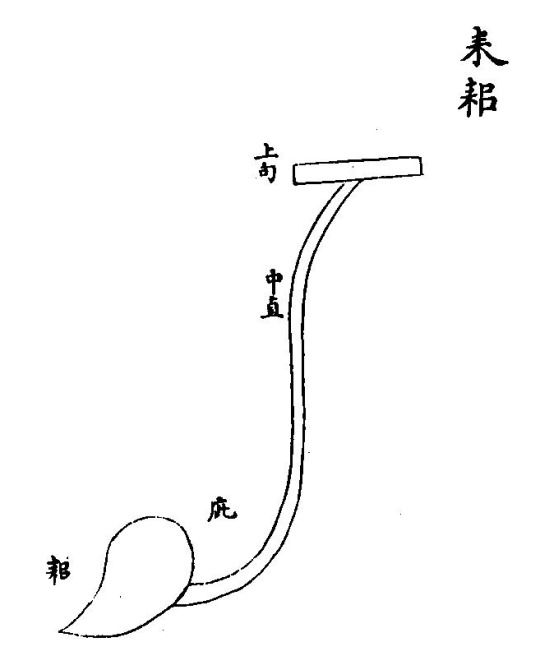
(Leisi耒耜, from Wang Zhen's Nongshu)
The main plough was instead the ox-pulled li犂 frame-plough.

(Li犂, from Wang Zhen's Nongshu)
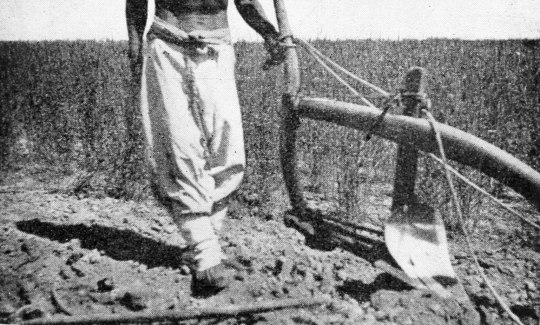
(Shantung plow, from King, 1911, Farmers of forty centuries)
QMYS also refer to the lighter feng鋒 plough.

(Feng鋒, from Wang Zhen's Nongshu)
The QMYS is the oldest Chinese text to refer to the iron-tined harrow, which it refer to as loucou𨫒楱

(Ba耙, from Wang Zhen's Nongshu)
The lao勞 bush-harrow was made by weaving thin sticks around the cross-bars.
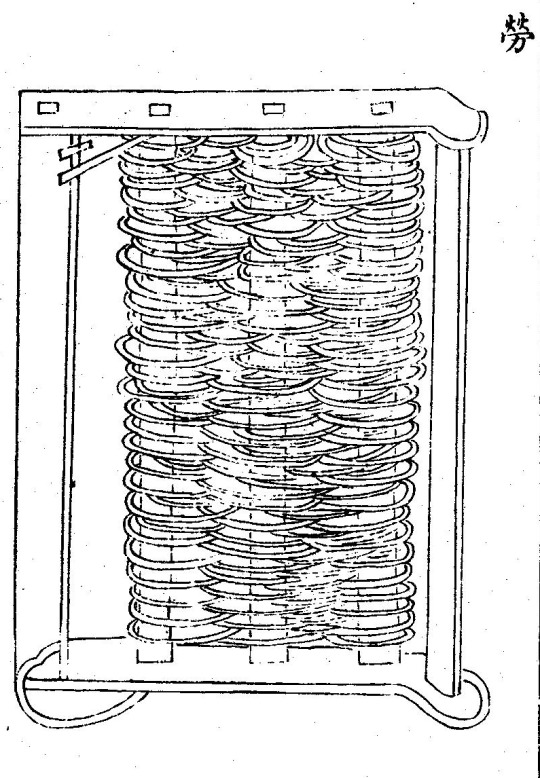
(Lao勞, from Wang Zhen's Nongshu)
The preferred tool for sowing was the seed drill, lou耬
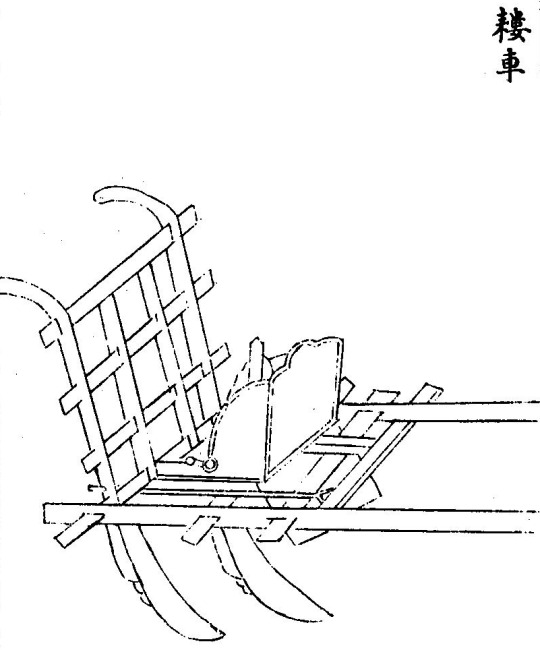
(Louche耬車, from Wang Zhen's Nongshu)
In addition to these ox-drawn tools, there were of course a varity of manual tools in different shapes and sizes, hoes, shovels, etc.
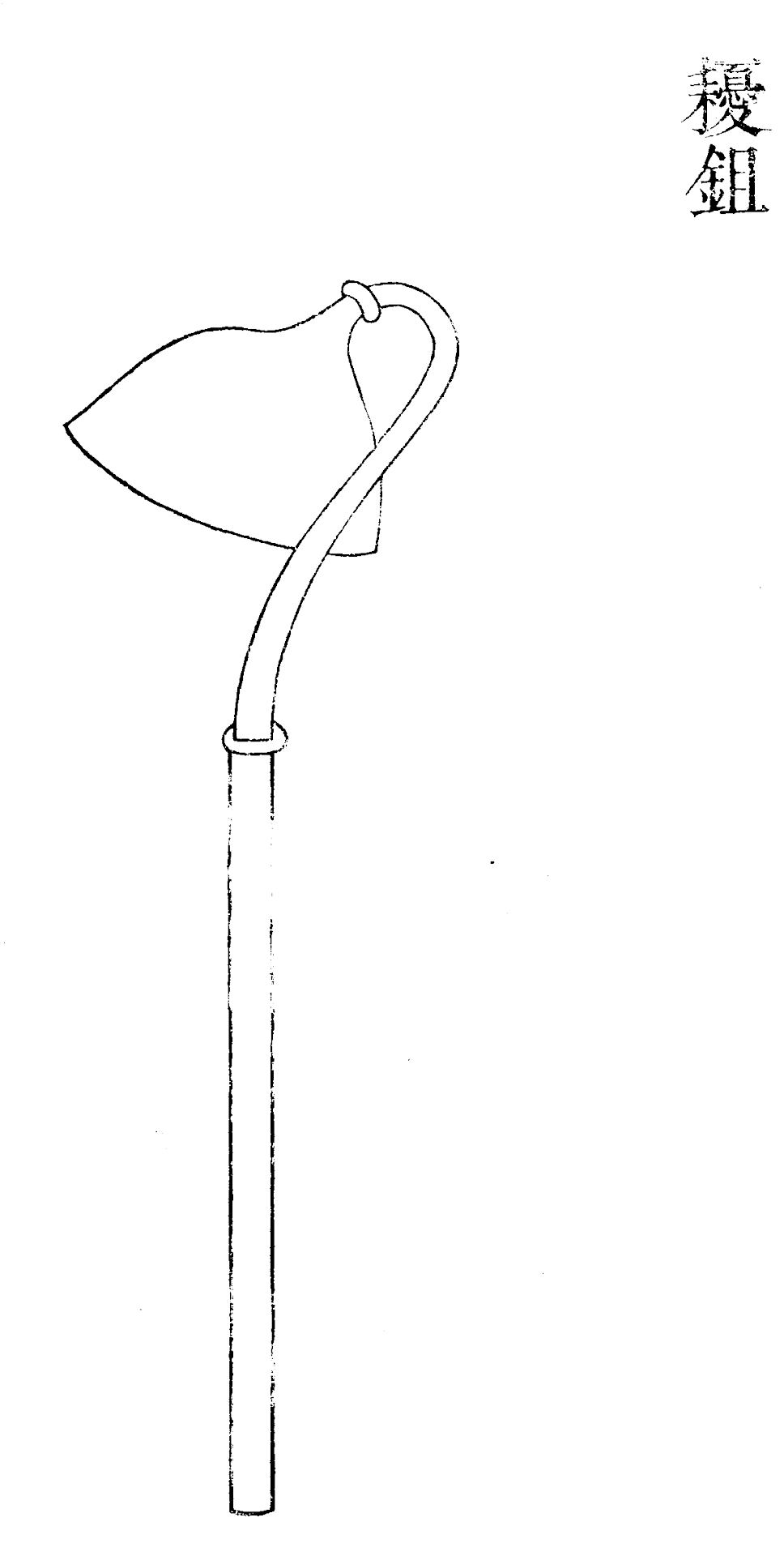
(Youchu耰鋤, from Wang Zhen's Nongshu)
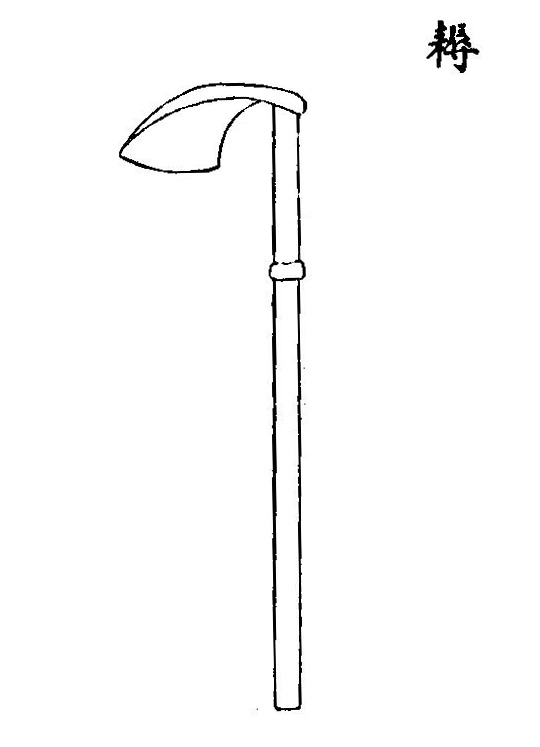
(Nou耨, from Wang Zhen's Nongshu)
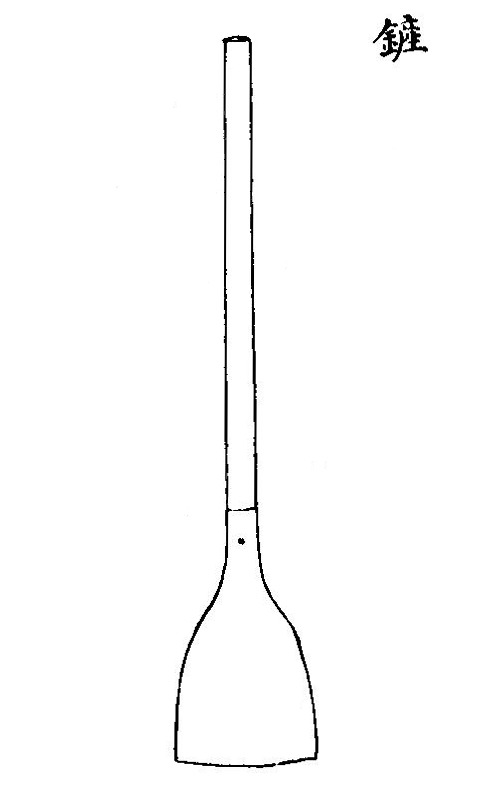
(Chan鏟, from Wang Zhen's Nongshu)
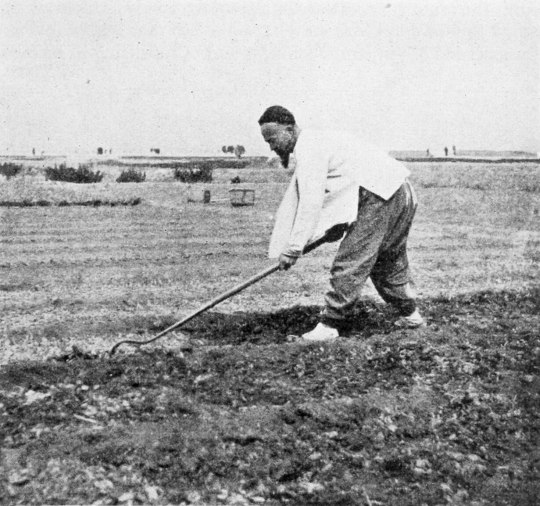
(Method of using the broad, heavy hoe in producing surface mulch, as seen in Shantung, China, from King, 1911, Farmers of forty centuries)
[Crop plants]
Later sections of QMYS treats the cultivation of the individual crops in much larger detail.
Foxtail millet (Setaria italica), gu穀, was the main staple crop.

Broomcorn millet (Panicum miliaceum), shu黍
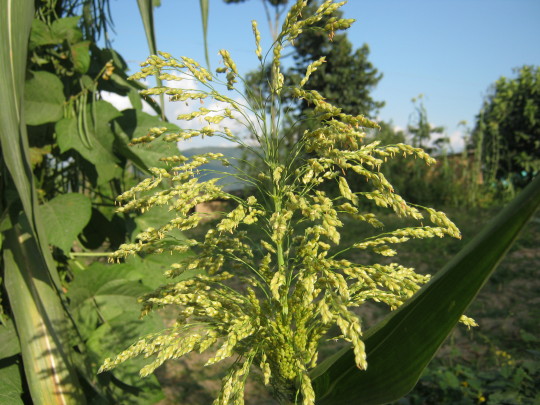
In addition to gu and shu, different varieties of foxtail and broomcorn millet were known under a large number of other names.
Mung beans or green gram (Vigna radiata), lüdou緑豆 (lit. "green beans"), used as green manure in crop rotation with millet

Adzuki beans (Vigna angularis), xiaodou小豆 (lit. "small beans") served a similar function
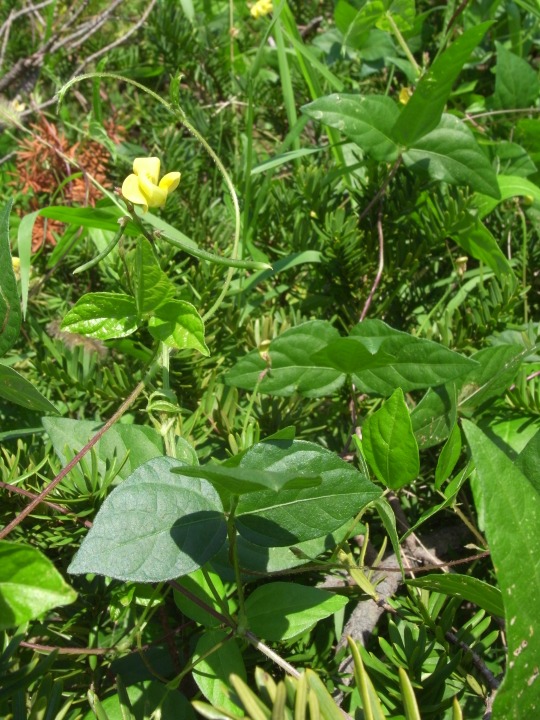
Wheat (Triticum aestivum), mai麥 (same name also used for barley) was primarily a winter crop in ancient China.

[Books quoted by QMYS in Section 1, in order of appearance]
The Zhoushu周書 (“Book of Zhou”), also known as the Yi Zhoushu逸周書, is a Warring States era collection of documents about Western Zhou, but the book has a complicated textual history. It is quoted once in QMYS, in Section 1. The quoted text is not found in the transmitted version.
The Shiben世本 (“Generational Roots”) records the genealogies of mythical rulers, the origin of the clan names, and mythological and historical inventors. Several versions existed, by different authors. The full text now lost, but it is quoted numerous times in other works. It is quoted once in QMYS, in Section 1.
The Lüshi chunqiu呂氏春秋 (“Spring and Autumn of Mister Lü”) is a collection of treatises and essays attributed to the retainers of Lü Buwei, the (in)famous Qin chancellor. It covers a very wide range of topics.
The Erya爾雅 (“Approaching the Correct”) is the oldest surviving Chinese glossary. Modern scholarship dates the book to the late Warring States and/or early Western Han periods. It is quoted numerous times in QMYS.
The Jianwei shiren犍為舍人, the “Retainer from Jianwei”, lived during the reign of Emperor Wu of Han and wrote a commentary on the Erya. The book is now lost. The quote in Section 1 is the first of three in QMYS.
The Zuanwen 纂文 (“Compiled Graphs”) by the Liu-Song scholar and historian He Chengtian何承天 (370 – 447) is now lost. It is quoted once in QMYS, in Section 1.
The Shuowen 說文 (“Explaining Graphs”) by Xu Shen許慎 (c. 58 – c. 147) analyses the composition and reasoning behind the different characters. It is quoted numerous times in QMYS.
The Shiming釋名 (“Analysing Names”) by Liu Xi劉熙 is a glossary in the style of the Erya written c. 200 AD. The quote in Section 1 is the first of three in QMYS.
The Liji 禮記 (“Ritual Records”) is a collection of ritual treatises compiled from older texts during Former Han, it became part of the textual canon as one the Five Classics and also as one the Three Ritual Classics. Its usage in QMYS is restricted to the Yueling chapter.
The Yueling月令 (“Monthly Orders”) chapter of the Liji is a calendrical treatise describing for each of the twelve months the position of the stars and other seasonal markers, important state rituals, and which activities should be undertaken in each month. Its inclusion in the Liji ensured it what read by every person aspiring to an education and it inspired a whole genre of similar texts, such as the Simin yueling. It is extensively quoted in QMYS.
Zheng Xuan鄭玄(127 – 200) was a famous scholar at the end of Han who wrote an influential commentary on the Three Ritual Classics. In QMYS quotations from the Yueling and Zhouguan are usually accompanied by quotes from his annotations.
Mengzi孟子 (“Master Meng”, theLatin Mencius) collects the teachings of the famous Warring States era philosopher Meng Ke (372–289 BC). The quote in Section 1 is the first of three in QMYS.
Wei Wen-hou魏文侯, Marquis Wen of Wei, ruled Wei during the early Warring States era. The single quote in QMYS attributed to him is found in the Huainanzi.
The Book of Miscellanea on Yin and Yang雜陰陽書 was apparently written during the early Han, but is now lost outside the quotations in the QMYS. The quote in Section 1 is the first of eight in QMYS.
Gao You高誘 lived at the end of Han and wrote commentaries on several texts, including the Lüshi chunqiu and the Huainanzi. The quote in Section 1 is the first of eight in QMYS.
The Huainanzi淮南子 (“Masters of Huainan”) is a collection of philosophical treaties compiled during Western Han at the court of Liu An (179 – 122 BC), vassal king of Huainan. It covers a wide range of topics. The quote in Part 9 is the second of nine in QMYS, the first being in the preface (which I have impudently skipped).
The Fan Shengzhi shu氾勝之書 (“Book of Fan Shengzhi”) is the oldest known Chinese agricultural treatise. Fan Shengzhi might originally have been an easterner, but during the early Western Han served as an official in the Guanzhong region. The original book has been lost, but it is extensively quoted in the QMYS, and also by Tang and Song encyclopedias.
Cui Shi崔寔 (d. c. 170) was a Han official and author of multiple works, including the Simin yueling and Zhenglun.
The Simin yueling 四民月令 (“Monthly Orders for the Four People”) is written in the style of the Liji Yueling, detailing each month's agricultural activities at the large estates of late Han North China. The original book is lost except as fragments in other books. It is very extensively quoted in the QMYS.
The Zhenglun政論 (“Essay on Government”) criticizes what Cui Shi considered the decline in morals and lax administration of law in his time. The original book is lost except as fragments in other books. It is quoted once in QMYS, in Section 1.
[Lettered notes]
The original text is a mix of large and small characters. I have collected the small text sections together in idented lettered notes within {} brackets.]
[Translation starts here:]
Section 1, Tilling the Fields
[Dictionary definitions]
The Book of Zhou says: “In the time of the Divine Farmer, Heaven rained millet [su粟]. The Divine Farmer thereupon tilled and planted it. He created pottery, cast axes and hatchets, and made the plough-shaft and ploughshare [leisi耒耜], the long- [chu鉏] and short-handle hoe [nou耨], to clear the grass and thickets. Afterwards the Five Grains supported and helped, and the Hundred Fruits were stored in abundance.”
The Generational Rootssays: “Chui created the plough-shaft and ploughshare. Chui was a vassal of the Divine Farmer.”
The Spring and Autumn of Mister Lüsays: “The ploughshare is six cun wide.”
The Eryasays: “To mow[qu斪] or weed[zhu斸] are spoken of as to settle [ding定].”
The Retainer from Jianwei says: “To mow or weed is to hoe [chu鋤]. They are names for settling.”
The Compiled Graphssays: “In the way of tending sprouts, the long-handle hoe [chu鋤] is not as good as the short-handle hoe [nou耨], the short-handle hoe is not as good as shovel [chan鏟]. A shovel is two chi long, with a blade two cun wide, and is used to level the ground and remove grass.”
Xu Shen's Explaining Graphssays: “The plough-shaft [lei耒] is for hand-tilling with a curved wood. The plough-share [si 耜] is the plough-shaft's straight end. The weeder [zhu斸] is for cleaving [zhuo斫]. In Qi they speak of it as the ziji鎡基. Some say the axe handle [jinbing斤柄] is curved by nature. A field [tian 田] is laid out [chen陳]. Where is planted grain is called a field. [The graph] resemble four 口, and the 十 is the pattern of paths and cross-paths. To till [geng耕] is to plough [li犂]. [the graph] comes from “plough-shaft” 耒 with the “well” [jing井] sound. Some say it is the ancients' well field [system.]”
Liu Xi's Analysing Names say: “A field [tian田] is full [tian填]. The five grains fill up within it. A plough [li犂] is profit [li利]. To profit, turn over the soil and cut off the grass at the root. The short-handle hoe [nou耨] resembles hoeing [chu鉏], with crouched back hoe among the stalks. To weed out [zhu] is to execute [zhu誅] someone. The ruler uses execution to dig up a matter at the root.”
[General advise]
In general, when opening uncultivated mountain and marsh fields, always in the 7th Month cut down and mow them. When the grass has dried, set fire to it. Arriving at spring, begin to clear out those of its groves where the wood is large, peel off the bark to kill them. When the leaves are dead and not casting shadow, they will readily yield to tilling and planting. After three years, when the roots have withered and the stalks decayed, use fire to burn them (entering the ground fully), till the uncultivated land to the end, and use an iron teeth loucou𨫒楱 harrow to rake it twice everywhere, hurl broomcorn non-glutinous millet, and bush-harrow [lao勞] it again twice everywhere. Next year then it is fitting to be a millet field.
In general when tilling eminent or inferior fields, do not ask about spring or autumn, [you] must pay attention to dry or wet to obtain what will be good. If flood and drought are not in concert, it is better with dry and not wet {A}. For the spring tilling, immediately take in hand the harrowing{B}. For the autumn tilling, wait for the turn to white to harrow{C}. [When the soil starts to dry, the surface turns white, which Jia Sixie refers to as 白背.]
{A: With dry tilling, then even if there are earth-clods, as soon as there is rain, the earth will pulverize and dissolve. With wet tilling, it will harden when it dries, and for several years will not be good. The proverb which says: “Wet tilling and damp hoeing is not as good as going home.” tells that it is of no gain and will be damaging. In the case of wet tilling, when it turns white quickly use the loucou on it, and there will likewise be no injury. If not done, it will be very bad.} {B: The ancients said you耰, now we say lao勞. The Explaining Graphs says: “The you is a tool for rubbing [mo摩] the fields.” Now people also name the lao bush-harrow a “rubber” [mo]. A vulgar saying is “till the field with the rubbing harrow”.} {C: During spring, there is much wind, and if [you] do not soon harrow, the earth will surely be empty and dry. During autumn the fields are soaked solid, and wet harrowing will make the earth stiff. The proverb which says: “To till and not to harrow is not as good as making it go to waste” perhaps tells that wetlands are difficult to handle, and delights in Heaven's timely chances. Huan Kuan's essay on Salt and Iron says: “Underneath a thick grove there is no lush grass. Between large clods there are no excellent sprouts.”}
In general, autumn tilling want to be deep, spring and summer tilling want to be shallow. Ploughing want to be narrow, harrowing want to be double{D}. In the autumn to till and cover over what is green is the best.{E} The earliest tilling want to be deep, and the turned over earth want to be shallow.{F} On land with themeda or cogon-grass [jianmao菅茅], [you] ought to let loose cattle and sheep to trample it. Then if in the 7th Month [you] till it, it will die{G}.
{D: Plough narrow and till finely, the ox then will not tire. Double-harrow and the land will ripen, during drought it will likewise protect the moisture.} {E: Reaching the winter months, the green grass that has regrown will be as excellent as adzuki beans [xiaodou小豆].} {F: If the tilling is not deep, the land will not ripen. If the turned over is not shallow, the stirring will bring forth the soil.} {G: If not the 7th Month, it will regrow.}
In general, the rule for excellent fields, is for mung beans [lüdou緑豆] to be first, adzuki beans and sesame [huma胡麻] is next to it. Thoroughly for all of them sow densly [?] within the 5th and 6th Months, and in the 7th and 8th Month plough and cover over to kill them. [This] will make a spring millet field with a harvest of ten shi on the mu, in excellence comparable to silkworm excrement and mature manure.
In general, after the autumn harvest, the oxen's strength will be weak. For those not yet caught up for autumn tilling, at the bringing down of [?] the foxtail [ gu穀], glutinous broomcorn [shu黍], non-glutinous broomcorn [ji穄], large grained [liang 粱], and glutinous foxtrail [shu秫]millets' stubble, then move the exhausted ones to quickly use the “spear-point plough” [feng鋒] on it. The ground is regularly soft and moist, and is not hard and tough. Then when arriving at the beginning of winter, [you] usually get to till and harrow, and not worry about it being dried up and arid. If the oxen's strength is small, only harrow it once during the 9th and 10th Months, and arriving at spring, sow without ploughing [?], is also doable.
[Excerpts from the Monthly Orders on tilling]
[This whole subsection consists of quotation from the classic text the Monthly Orders [Yueling 月令], a chapter of the Ritual Records [Liji禮記], accompanied by quotations from commentary by the Eastern Han scholar Zheng Xuan.]
The Ritual Records' Monthly Orderssays: “In the Month of First Spring, … the Son of Heaven therefore on the inaugural day pray for grain to the High God [shangdi上帝]{H}. Then, selecting the inaugural chen day, the Son of Heaven personally conveys the plough-shaft and ploughshare. … He leads the Three Excellencies, the Nine Dignitaries, the various feudal lords, and the great men, to till themselves the God's Acre [Di ji帝籍]{I}. This Month, Heaven's breath descends down and Earth's breath rises up. Heaven and Earth are in harmony with each other, and the grasses and trees sprout and stir{J}. … He instructs the ministers for the fields{K}. They skilfully assess the hills and mounds, the slopes and defiles the highlands and lowlands, for what is suitable among the land and ground, and what to plant of the Five Grains, so as to teach and guide the people. … Field affairs having been put in order, he first settles the guidelines and responsibilities. Agriculture was therefore not in confusion. ...”
{H: Zheng Xuan's Annotations says: “It speaks of the first xin day, and the suburban sacrifices to Heaven. The Spring and Autumn Transmittals says: 'In spring the suburban sacrifices to the Lord of Agriculture [Houji后稷] to pray for farming affairs. Thus after the commencement of hibernation, the suburban sacrifices. After the suburban sacrifices, the tilling.' The High God is the god of the Grand Tenuity [taiyi太微].”} {I: “Inaugural chen is perhaps a propitious chen day after the suburban sacrifices. … The God's Acre is the field by which is regulated the Heavenly Divinity's lending the people strength.”} {J: “This is the yang breath ascending through the surface, a portent that there can be tilling. The Book of Agriculture says: 'For the best growth cover over the stakes. When they show the base and can be pulled out, those who till urgently set out.”} [This Book of Agriculture [nongshu農書] is apparently the same as the Book of Fan Shengzhi which is quoted in more detail on this topic further down.] {K: “With minister it speaks of the 'field surveyors', the officials in charge of agriculture.”}
“In the Month of Middle Spring, … those who till have a short rest, they then repair their gate and door leaves [heshan闔扇]{L}. There are no great affairs undertaken which would hinder agricultural affairs. … ”
{L: 'Rest' [she舍] is similar to 'pause' [shi止]. Hibernating insects open doors, and with tilling affairs a little tranquil, they then put in order their gates and doors. When they use wood it is called he闔, when they use bamboo or reeds it is called shan扇.”}
“In the Month of First Summer, … he encourages agriculture and motivates the people, and there are not anyone who neglects the season{M}. … He instructs the farmers to apply themselves to action, and not rest at the capital{N}. ...”
{M: “He puts weight and effort in encouraging [them?] to come to him.”} {N: “He presses and urges the farmers. … The Rites for the King Residing in the Bright Hall says: 'There are no sojourners in the state'.”
“In the Month of Last Autumn, … The hibernating insects altogether curl up inside, and everyone plaster their doors.{O}”
{O: “With 'plastering' [jin墐] it speaks of smearing plaster [tu塗] to shut them. This is to avoid the killing[?] air.”}
“In the Month of First Winter, … Heaven's breath rises up and Earth's breath descends down. Heaven and Earth do not communicate, they shut up and hide, and achieve winter. … He encourages the farmers to rest and comforts them{P}. …”
{P: “'The Ward Corrector [dangzheng黨正]' 'drinks wine with the people belonging to him, and correctly arrays their ranks.'”} [Zheng Xuan here quotes from the Rites of Zhou]
“In the Month of Middle Winter, … ground affairs are not undertaken, care is taken not to open up what is covered, and not to open rooms and buildings. … [otherwise] the Earth's breath would further spill out, this is spoken of as opening the house of Heaven and Earth. The various hibernating [insects] would then die, and the people would be ill and sick{Q}. …”
{Q: “When the Great Yin employed in affairs, it especially puts weight on closing up and keeping safe.” Note that in the present era's tilling in the 10th and 11th Months is not straightly disobeying the Way of Heaven, and harming hibernating insects. [If] the earth likewise was not made moist, the harvest would surely be meagre and small.} [The words “Note … small” are not part of Zheng Xuan's commentary, but are rather Jia Sixie's own comments.]
“In the Month of Last Winter, … he instructs the field officials to announce people to bring out the Five Seeds{R}. He instructs the farmers to plan their plough-pairs and tilling affairs, repair their plough-shafts and -shares, and prepare their field tools{S}. … This month, the sun has gone through the stations, the moon has gone through the positions, and the stars have cycled around Heaven. The numbering is soon about to end{T}. The year will once more begin. Pay attention to your farming people, and do not have them sent about{U}.”
{R: “He instructs the field officials to announce to the people to bring out the Five Seeds. The great cold has passed by, and farming affairs are about to begin.”} {S: The ploughshare [si耜] is the metal of the plough-shaft [lei耒]. The ploughshare is five cun wide. Field tools are the types of hoes [ziji鎡錤].” {T: “It tells that the sun, moon, and stars have travelled around until this month, when they all have made a circuit to their old locations. The 'stations' [si次] are the lodges [she舍]. The 'positions' [ji紀] are similar to lodges.”} {U: “er而 [“thy”] is similar to ru汝 [“you” or “your”]. It tells to pay attention solely to the hearts of your farming people, and make people prepare their resolve for the affairs of tilling and sowing. It is not possible to conscript them for labour. If conscripted for labour, their resolve will scatter, and they will neglect their profession.”}
[Other quotations on tilling]
Master Meng says: “A gentleman's assignment is like a farmer's tilling.”{V}
{V: Zhao Zhu's annotations says: “It tells that to be hasty in your assignment, like a farmer who does not till, is impossible.”}
Marquis Wen of Wei says: “People in spring put their effort into tilling, in summer use their strength for weeding, and in autumn they gather their harvest.”
The Book of Miscellanea on Yin and Yang says: “When on hai亥 it is in the Heavenly Granary constellation, it is the start of tilling.”
The Spring and Autumn of Mister Lü says: Fifty-seven days after winter solstice, sweet flag [chang��] grows. Sweet flag is the first to grow of the hundred hundred grasses, and at this point tilling starts.
The Masters of Huainan says: That which does the affairs of tilling is toil, that which does the affairs of weaving is trouble [?]. They are affairs of toil and trouble, yet those people who do not rest know they can be used for clothes and food. A person's feelings are not capable of being without clothes or food. The way of clothes and food surely starts at tilling and weaving. … Those who, if they till and weave, who will start at the beginning with considerable toil, and end with certain profit, are the multitudes.
It also says: “To be unable to till and yet want glutinous broomcorn or large grained millet, to be unable to weave and yet want to sew attires, to have nothing in their affairs and yet seeking their merit, is difficult.”
[Quotations from Fan Shengzhi]
The Book of Fan Shengzhisays: “In general, the root of tilling lies in determined timeliness, harmony with the ground, applying oneself to manure and moisture, and to hoe early and harvest early.”
“At spring when the frost disperse, Earth's breath starts to permeate, and the soil's sole harmony disperse. At the summer solstice, Heaven's breath starts to heat, the yin breath starts to flourish, and the soil again disperse. Ninety days after summer solstice, when day and night are split, Heaven and Earth's breath are in harmony. Using these times to till the fields, one will yield five, which is called fertile bounty, all then are times for work.”
“At spring when the Earth's breath permeates, [you] can till the hard and tough earth with black, lumpy soil, immediately level and rub down its clods to give growth to grass. When the grass grows, again till it. When the sky has a little rain again till and harmonize it. Do not make that which has clods await the season. This spoken of as 'if strong soil, then weaken it'.”
“A spring portent that the Earth's breath has started to permeate: Hammer down wooden stakes, a chi and two cun long, cover over a chi [so that you] see two cun. After the advent of spring [lichun立春], the soil clods will break up, and the top will slide down the stakes. When they show the base, and can be pulled out, after twenty days from this time, the harmonious breath will leave, and promptly the soil will stiffen. With timely tilling, one will yield four; till when the harmonious breath has left and four will not yield one.”
“When the apricots start to flower and flourish, immediately till light soil and weak soil. Wait for the apricot flowers to fall off, and then till again. Till and immediately roll it [lin藺]. When grass grows, and there is rain and moisture, till and heavily roll it. For soil that is particularly light, use cattle and sheep to trample it. Like this the soil will strengthen. This is what spoken of as 'if weak soil, strengthen it'.”
“If at the spring breath is not permeated, soil fully fitting will not protect its moisture, and for the remainder of the year will not be suitable for sowing, and no manure will not dissolve [?]. Take care to not till dry land. Wait for grass to grow, and to arrive the time it can be tilled. When there is rain, promptly till it, The soil will be close with each other, sprouts only will grow, grass and weed will rot, and [you] will always achieve good fields. This way one tilling will yield five. If not done like this, but dry tilled, clods will be tough, sprouts and weed will spring forth from the same hole and will be impossible to hoe into order, and and it will turn around to become failed fields. If in autumn with no rain [you] yet till, it will sever the soil's breath, and soil will be hard and dry. These are called 'arid fields' [latian臘田]. And when you till in severe winter, [you] will leak out the yin breath, the soil will wither and dry out. These are called 'parched fields' [futian 脯田]. Arid fields and parched fields are both wounded fields. If for two years they do not produce sheaves of grain, then rest them for a year.”
“In general wheat [mai麥] uses the 5th Month for tilling. The 6th Month is second for tilling, and in the 7th Month [you] must not till. Carefully rub and level to await the time for sowing seeds. Till in the 5th Month, one will yield three. Till in the 6th Month, one will yield two. If tilled in the 7th Month, five will not yield one.”
“In winter when the rain and snow has stopped, immediately roll it down. Trap the snow in the soil, and do not cause the following wind to fly away with it. If it snows later, roll it down again. Then at the advent of spring, it will protect the moisture, freeze the insects to death, and the coming year will be suitable for sowing.”
“Obtain the harmony of the season and fit to what is suitable for the land, then even if the fields are meagre and bad, the harvest can be 10 shi on a mu.”
[Quotations from Cui Shi]
Cui Shi's Monthly Orders for the Four Peoplesays: “1st Month, Earth's breath rises up. For the best growth cover over the stakes. When they show the base and can be pulled out. Hasten to cultivate fields with strong soil and black lumps. 2nd Month, Yin's frost is entirely moist. It is possible to cultivate excellent fields with slow soil and the small places by the river banks. 3rd Month, when apricot flowers are abundant, it is possible to cultivate fields with sandy, white, and light soils. 5th Month and 6th Month is is possible to cultivate wheat fields.”
Cui Shi's Essay on Governmentsays: “Emperor Wu used Zhao Guo as Chief Commandant of Searching for Millet, to teach the people tilling and planting. In his method there was three ploughshares [li犂] together for one ox, with one person escorting it, putting down seeds, pulling the seed-drill [lou耬], and in everything taking up preparations for it. In a day he sowed 1 qing. Arriving at present Sanfu [the region around Chang'an], they still rely on its advantages. Now in Liaodong when they till and plough, the shafts are four chi long, the rotations interfering with each other. Then they use a pair of oxen, a pair of people to lead them, one person in charge of the tilling, one person to put down seeds, and two people pull the seed-drill; in total they use a pair of oxen and six people, and in one day they only sow twenty-five mu. They are isolated [?] in the extreme like this.{W}”
{W}Note for three ploughshares together for one ox is similar to the present three-footed seed-drill, why the unknown tilling method? Now from Jizhou濟州 and westward they still use the long-shafted plough and the two-legged seed-drill. Long-shaft tilling on level ground is just about possible, but between the mountains and brooks, [the ground] does not permit its use, moreover the rotations are extremely difficult and costly in strength. It is not the equal the flexible ease of Qi people's luxuriant[?] ploughs. The two-legged seed-drill sows dense ridges, and is likewise not as good for hitting the mark as the one-legged seed-drill. [This seems to be Jia Sixie's own comment to Cui Shi's text.]
8 notes
·
View notes
Text
Happy Shavuot! The Jewish holiday of we-got-the-10-Commandments-isn't-that-cool starts tonight!
Basically: Biblically, this is the wheat harvest day in ancient Israel and one of the three ancient pilgrimage festivals (the others being Sukkot & Passover). Additionally, traditionally, this is the day that Moses came down from Mount Sinai with the tablets. It's set to be seven weeks post-Passover, and many Jews will count the Omer by saying a special blessing and counting up each day until Shavout.
For modern Jews, we celebrate in the following ways:
A feast (no surprises there - have you met us?). The twist here is that Shavout is oft considered the "dairy holiday" and many will have dairy feasts instead of meat. There is a tradition that after we got the Torah, we didn't have any kosher meat, so we had to do something else. The specifics vary - my Ashkie af NYC af Jewish family does cheesecake, my Mizarchi bestie does sugary dairy dough, my Moroccan friend does a seven layer kind of cake. Cheese stuffed dough equivalents are common among a variety of Jewish traditions.
The Book of Ruth and the 10 Commandments are traditional readings.
All night Torah study! Different communities will plan things differently, but most traditional communities will tip over into what is definitely the morning, if not Actual All Night. (sidebar: I am going to my first "all night" til 3AM study tonight!).
This is a very brief overview - if other Jews have details or other chag traditions I'd love to hear about them!
24 notes
·
View notes
Text
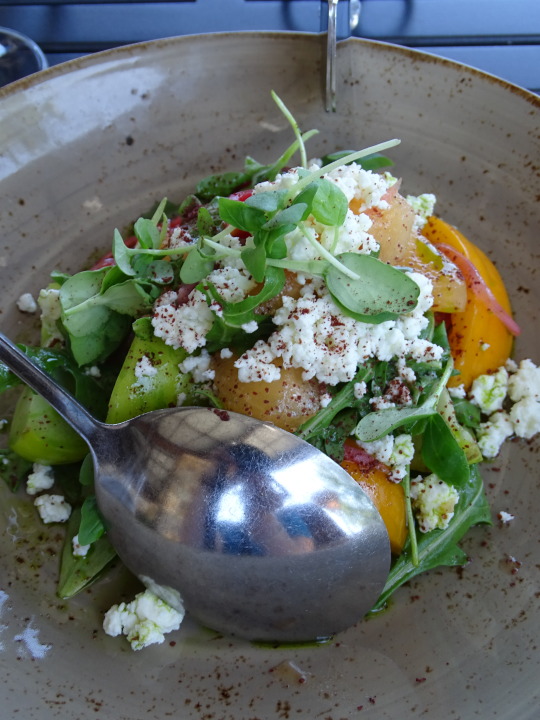
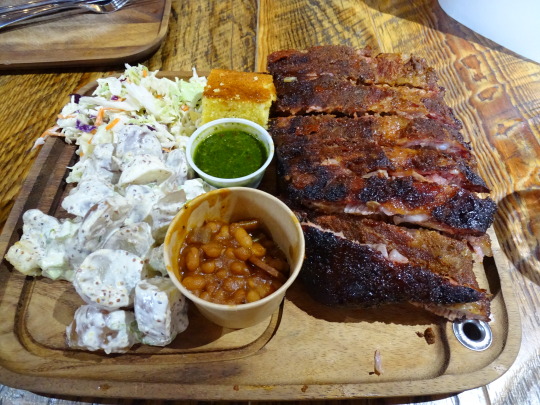
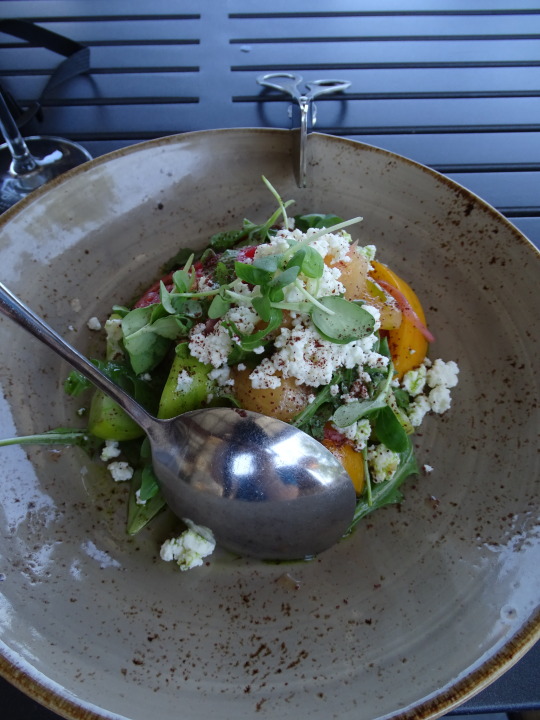
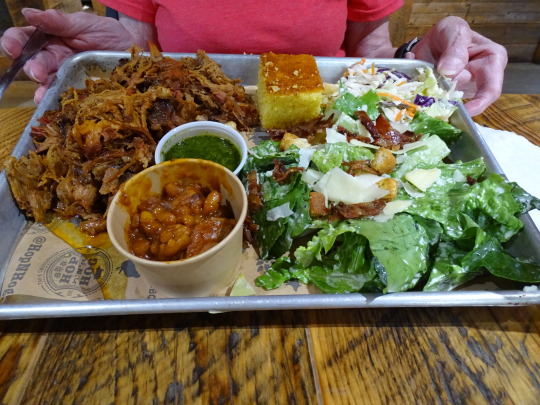
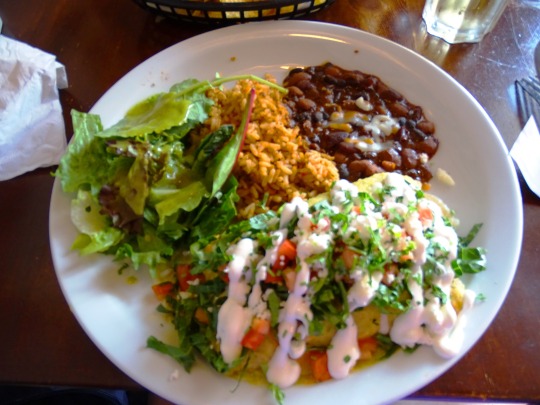
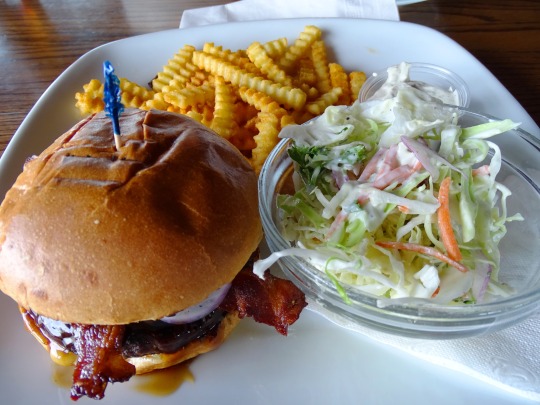
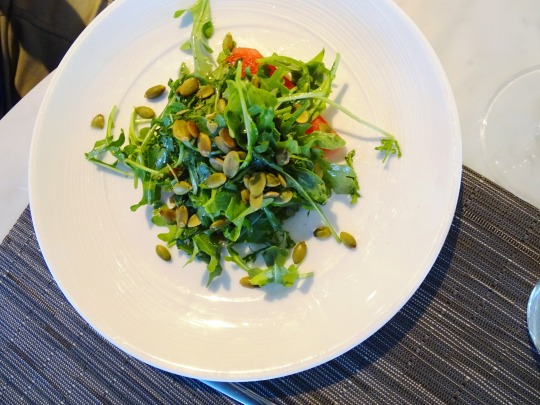
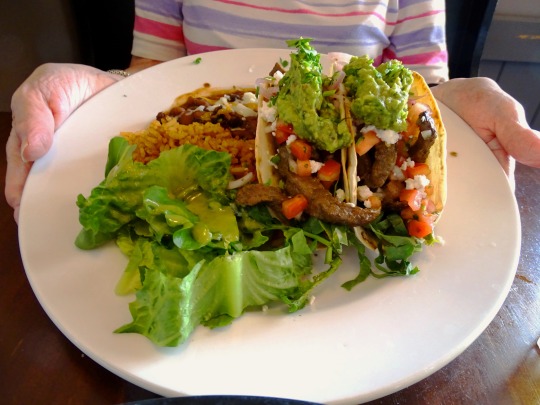
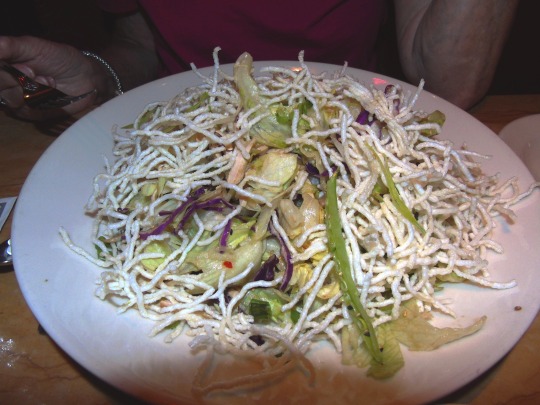
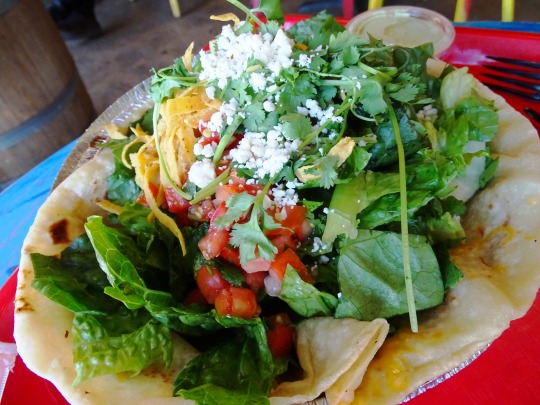
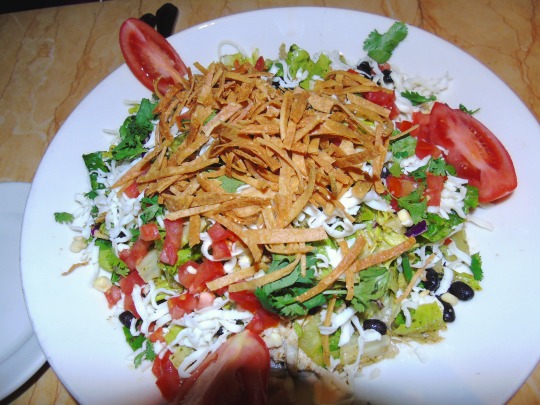
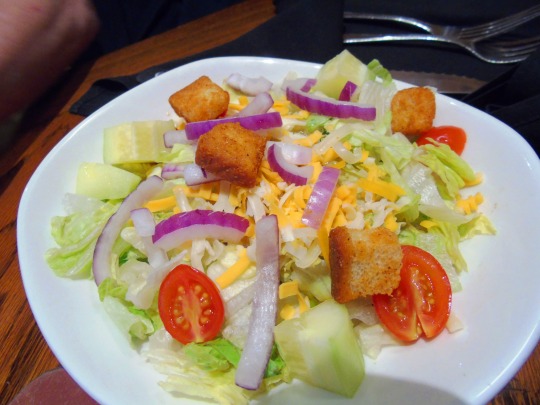
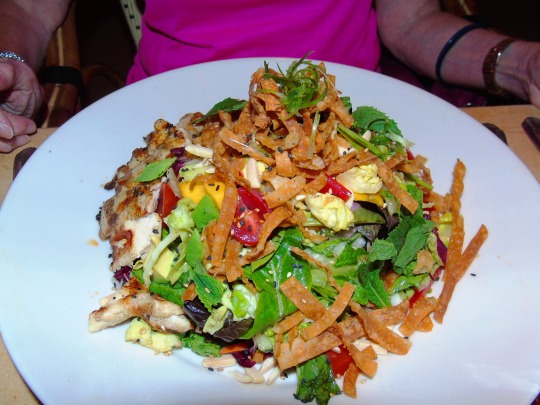
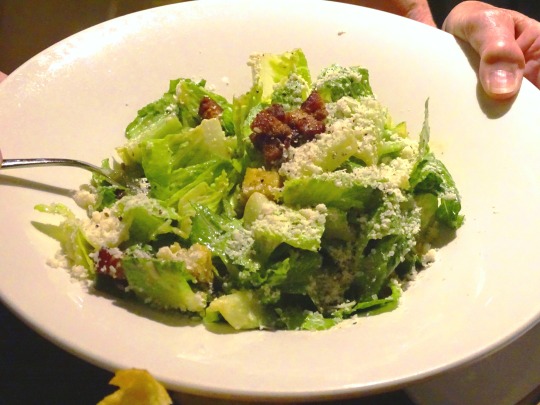
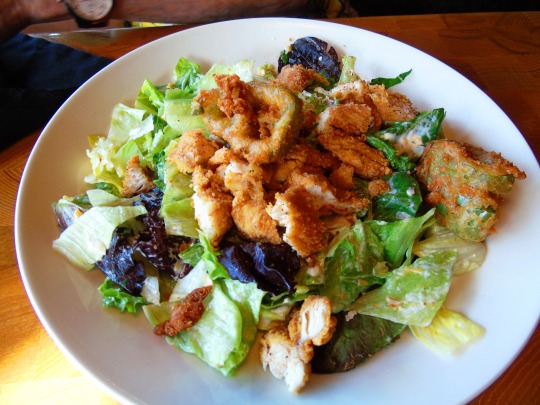
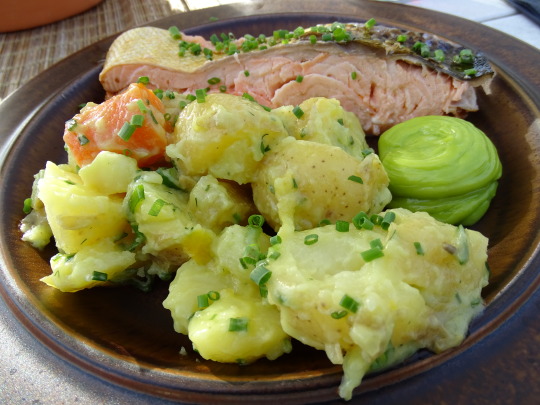
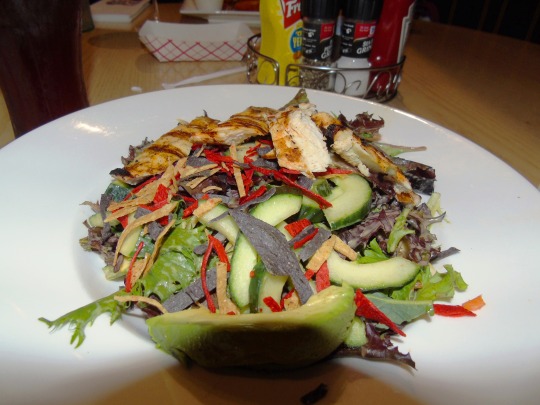
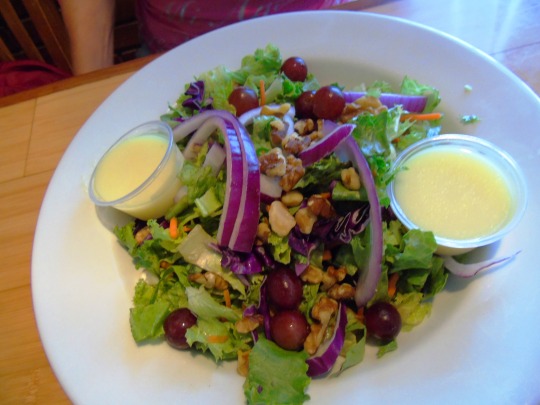
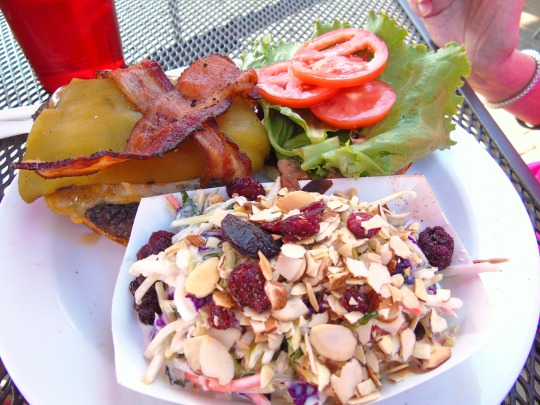
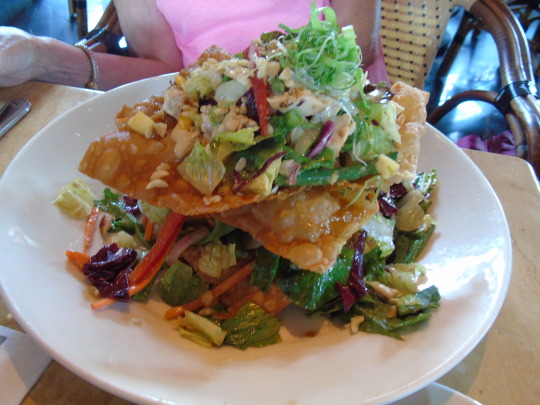
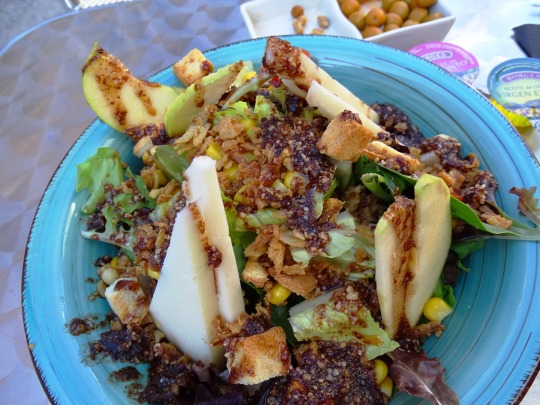
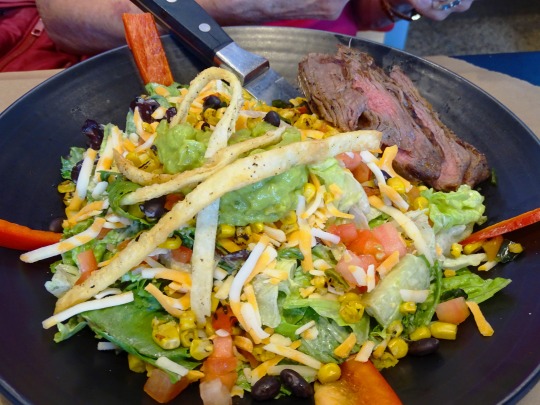
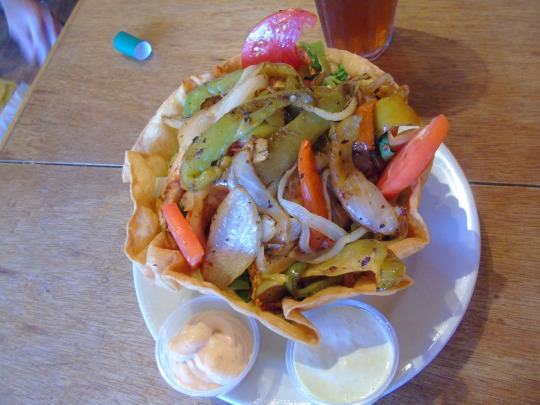
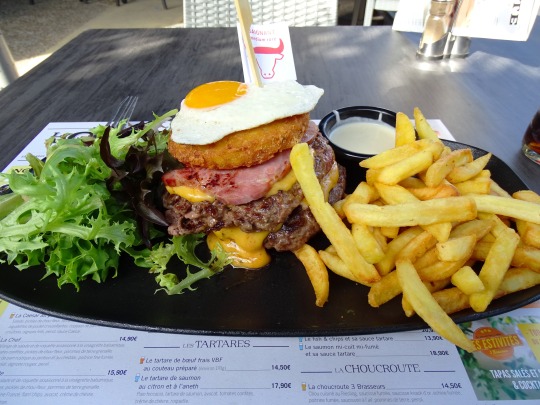
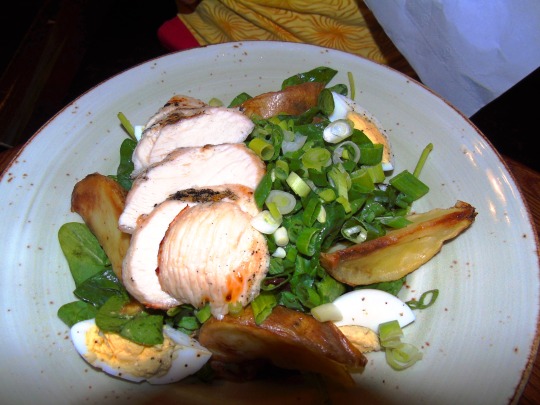
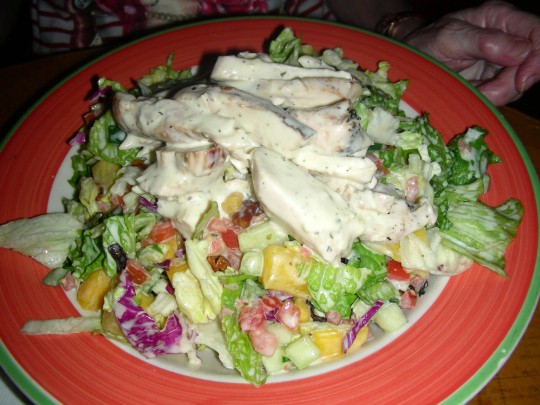
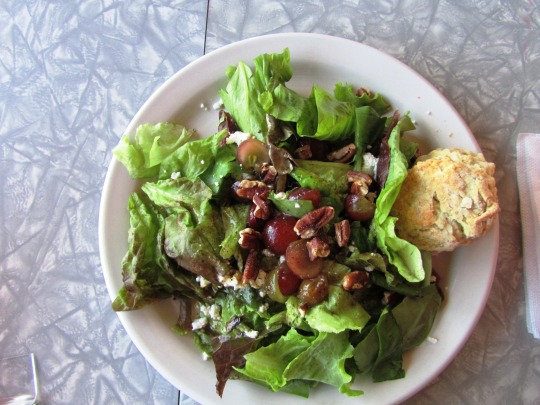
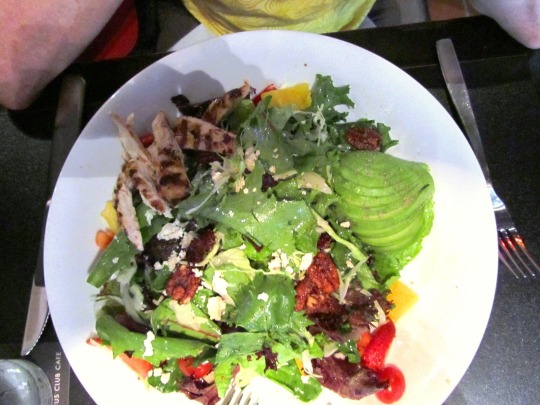
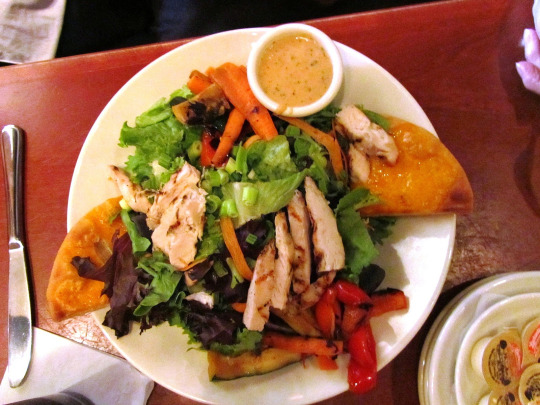
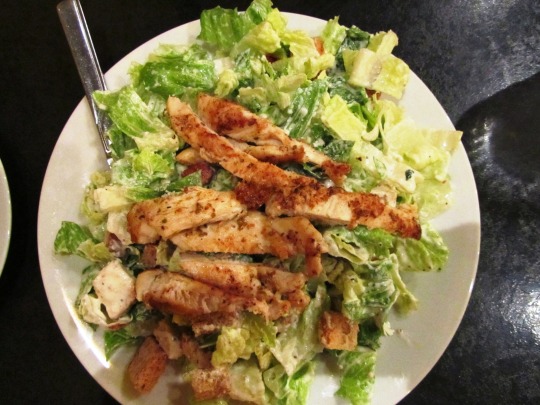
National Salad Day
Hey there, salad enthusiasts! Get ready to celebrate National Salad Day, a day dedicated to our leafy green friends and their fellow vegetable companions. Get your forks ready and prepare to dive into some delicious, healthy, and colorful creations. This national day is all about celebrating the wonders of salads and encouraging everyone to incorporate more greens into their diets. So, let's explore the history and delights of National Salad Day!
When is Salad Day?
It's national salad day on the 1st May.
The Birth of National Salad Day
While salads have been around for centuries, National Salad Day is a relatively new addition to the calendar. It started gaining popularity in recent years as people became more conscious of their health and nutrition. The origins of this day are closely tied to the rise of social media and food blogging. Influencers and health-conscious individuals shared their love for salads online, inspiring a wave of salad enthusiasts.
On May 1st, 2015, the internet exploded with mentions of National Salad Day. It became an annual celebration, bringing people together to appreciate the wonders of fresh veggies and creative combinations. From tangy dressings to crunchy toppings, it's a day to experiment and create salads that satisfy both your taste buds and your nutrition goals.
Salads Around the World
Salads come in countless varieties, each reflecting the unique culinary traditions of different cultures. Let's take a whirlwind tour around the world to explore some famous salads:
Greek Salad: A refreshing mix of tomatoes, cucumbers, red onions, feta cheese, and olives.
Caesar Salad: A classic made with romaine lettuce, croutons, Parmesan cheese, and a creamy dressing.
Cobb Salad: A hearty salad with a bed of lettuce topped with avocado, bacon, chicken, hard-boiled eggs, tomatoes, and blue cheese. It's a meal in itself!
Caprese Salad: A simple and elegant combination of fresh tomatoes, mozzarella cheese, and basil, drizzled with olive oil.
Tabbouleh: A Middle Eastern salad made with parsley, bulgur wheat, tomatoes, and a lemony dressing.
How to Celebrate National Salad Day
Now that you know the history and some famous salad recipes, it's time to celebrate National Salad Day in style. Here are a few ideas to get you started:
Organize a salad potluck with friends and family. Each person can bring a unique salad creation to share.
Try out a new salad recipe you've never made before. Challenge yourself to experiment with different ingredients and flavors.
Visit a local farmer's market and stock up on fresh produce for your salads. Supporting local farmers is always a good idea!
Share your favorite salad recipe on social media using the hashtag #NationalSaladDay. Spread the salad love!
Did You Know?
Did you know that the largest salad ever made weighed a whopping 20,100 pounds? It was created in Romania in 2012 and included a mix of lettuce, cabbage, carrots, peppers, and onions. That's one gigantic and healthy serving!
History behind the term 'Salad'
500 BC
The Birth of Salads
Salads have been enjoyed for centuries. The ancient Greeks and Romans were known to eat mixed greens with dressing as a way to cleanse their digestive systems. They believed that the combination of raw vegetables and herbs had medicinal properties.
17th Century
Salad as a Symbol of Wealth
In the 17th century, salads became associated with wealth and nobility. It was considered a luxury to have fresh greens and exotic ingredients on one's table. Salads were often served as a grand gesture to impress guests.
1763
The Word 'Salad' Enters English
The word 'salad' entered the English language in 1763, derived from the French word 'salade.' The French had a significant influence on culinary customs during that period, and the term quickly gained popularity in the English-speaking world.
19th Century
Salads Evolve with New Ingredients
During the 19th century, salads started to incorporate a wider variety of ingredients. Fruits, nuts, and mayonnaise-based dressings became popular additions. Salads also became more decorative, with intricate garnishes and arrangements.
20th Century
The Rise of Salad Bars
In the mid-20th century, salad bars gained popularity in restaurants and cafeterias. Salad bars offered a wide selection of fresh ingredients, giving people the freedom to customize their salads. This concept revolutionized the way salads were served.
21st Century
Salads for Health and Green Living
In the 21st century, salads have become synonymous with healthy eating and green living. As more people seek nutritious options and environmental sustainability, salads have become a popular choice. From kale salads to quinoa salads, there are endless variations to suit different tastes and dietary preferences.
Source
#tomato melon salad with feta#I don't like salad that much#travel#original photography#vacation#USA#Canada#restaurant#watermelon cucumber salad#not my salads#potato salad#ribs#pulled pork#BBQ#Caesar Salad#Tapas Amiundo#NationalSaladDay#1 May#National Salad Day#coleslaw#Spain
5 notes
·
View notes
Text
Thess vs Preparation
Why does preparation have to be so damn painful?
Groceries arrived, and it was ... a lot, but it was well-planned. I have emergency calories - raisins, peanuts, some yoghurt-coated raspberry things I like because they were on sale. I have tinned fruit because the fresh stuff goes off so fast - peaches because cheap own-brand, and fruit cocktail because, again, on sale. After much searching, I found some soups that aren't thickened with wheat flour, and got some of that for when I'm too tired and sore to even move and too ragged to have an appetite. Fixings for smoothies and some breakfast cereal, because maybe skipping breakfast is a bad idea. That shit is important.
I also have menu plans. I found a recipe for gluten-free cereal bars, so I'll be making those. There's some cooked chicken in the freezer that will go into risotto, and that'll last me quite awhile. I also have plans for chicken stew and beef stew. Well, the chicken stew can be immediate but the beef will have to wait a little because a substitution by the grocery store means I have less beef than I needed. But that's okay, because when I go out to get more, I can also get fresh green pepper and courgette for the bolognaise I'm planning. Basically this month is going to be a lot of batch cooking and a lot of stuff going in the freezer. With the way this month's been, having a variety of stuff I can just put in the microwave feels like a good idea. If it keeps getting hotter, I won't feel much like cooking.
However, all of this preparation? OW. Putting it away is one thing, but I also had to do a little bit of a clear-out of the cupboards. Because they're a bit high and fairly deep, I have a hard time reaching to the back of them, so there was some stuff that needed to be binned. But of course, since I do have a hard time reaching to the back of the cupboards, that was also made of ow. I already hurt when I got up today but now, just ... ugh. Still, everything's all set up tidily, and all I need to do is take the stuff that needed binning out to the trash. That's not going to be fun either, but the trash needs to not be in the house.
Preparation is also expensive - the sticker shock on the grocery bill, even when budgeted for, and even when it is an overall savings, is painful. But then again, everything is expensive. At least I can arrange the budget to do that and afford to replace my ancient Blu-Ray / DVD player, which I got second-hand from the parentals ages ago. The old one works, more or less, but makes wonky noises if I try to play Blu-Rays in it, and half the stuff I want to get (as I rebuild my video library because I no longer trust the streaming services) are more easily available on Blu-Ray. Thus, new player. And possibly a little left over to make a bit more of a dent in my Steam wish list, given the Steam summer sale. (Because I need more games, right? Yeesh. Someone needs to keep me away from the Steam Next Fest next year; giving me access to demos is bad for my bank balance.)
Not that there aren't reasons to be cheerful. The groceries? I will be making things with all that. Soup - as well as my usual potato soup, I will be attempting sweet potato soup, because I have become quite the fan of sweet potatoes lately, and soup is good to have around. The stew and bolognaise and risotto. Cereal bars. I might even attempt brownies. I do enjoy making things. As for the new Blu-Ray / DVD player ... well, for those times when sitting in the desk chair is unthinkable, at least I'll have entertainment.
So ... it's worth it. I just have to remind myself that it's worth it. Otherwise, all the pain and expense and everything just gets depressing, and I can't afford to be depressed on top of everything else.
On another note: Scarlet Hollow. Hoooooooooboy. Glad I sprang for that one, I have to say, but ... creepy. Which is good - I like creepy.
2 notes
·
View notes